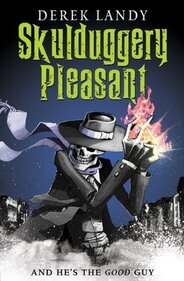 Volume XXVII Middle Grade, Part 3 Summer is in full swing, and that means it’s time for summer reading! The middle grade age range (8-12) is one of the most important times in a young reader’s development—when they learn deeper comprehension, strategic reading, to increase their vocabulary and reading speed, and help develop their writing and communication skills along the way. These middle grade books are set in Ireland, to help our Irish dancers not only get interested in reading, but even more interested in the country their favorite hobby comes from along the way! 1. Skulduggery Pleasant, Derek Landry The first book (of 15!) in the Skulduggery Pleasant series follows 12-year-old Stephanie as she inherits her horror-writer uncle’s estate upon his death. One night, alone in the house, Stephanie is rescued from a mysterious man by a walking, talking skeleton mage named Skulduggery Pleasant, and discovers that her uncle’s books may not have been fiction after all. Stephanie and her new friend team up to defeat the evil wizard Serpine, who’s looking for a magic specter that will give him tyrannical powers. Full of gallows humor (what else would you call a wisecracking skeleton?), this is a series of action, adventure, and magic, with a dash of finding yourself thrown in. The series has won numerous awards (including Publishers Weekly Best Books, ALA Best Fiction for Young Adults, and the IRA/CBC Young Adults’ Choice, among others) and a screenplay is in the works! Perfect for the pre-teen who loves all things creepy and good, long series to tuck into. 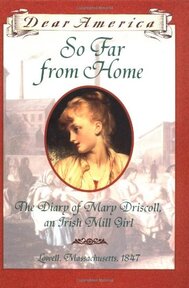 2. So Far From Home: The Diary of Mary Driscoll, an Irish Mill Girl, Barry Deneberg This is a personal recommendation from our Office Manager, Devon, who was obsessed with this series of “diaries” written by young woman throughout American history called “Dear America” when she was a middle grade reader (there’s one for every era you can think of, and a related series about young royals, as well!) This particular book focuses on the Irish immigrant experience, following a fictional girl named Mary Driscoll who escapes the Great Famine by coming to America—landing in Lowell, Massachusetts in 1847. The narrative is chock-full of Irish idioms and speech patterns of the time, as well as astoundingly accurate historical detail that will really bring the time period to life for young readers. Due to the historical nature of the books, they often deal with serious subjects (in this one: multiple deaths—particularly of parents—dangerous mill conditions, disease, and poverty), but hold both historical (there’s even an appendix with historical details—like popular songs and fashions) and life lessons within the hard truths. 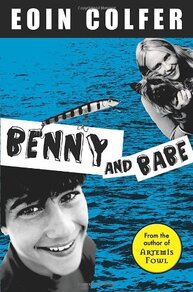 3. Benny and Babe, Eoin Colfer Technically the second book in Colfer’s (of Artemis Fowl fame) Benny duology, but readers can enjoy the books in any order! When 13-year-old Benny Shaw returns to Ireland for the summer from his new home in Tunisia (see the first book, Benny and Omar, for that story,) there’s not much to do at his lighthouse-keeper grandad’s on the coast. That’s until Benny meets Babe—the town tomboy and entrepreneur—who involves him in her “business”: reselling fishing lures to the same fishermen who lost them. A competition arises between the pair and bad boy ex-con Furty Howlin, but when danger arises community proves more important than their fight. Described as full of strong character development and a vibrant narrative voice, as well as plenty of Irish colloquialisms and humor, this coming-of-age novel deals with everything from bad home lives and first loves with a sensitivity and candor young readers will appreciate. 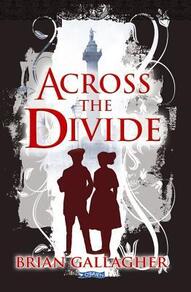 4. Across the Divide, Brian Gallagher Amazingly, we’ve managed to find TWO Irish middle grade books with male protagonists—something unfortunately hard to find in the children’s book sphere. This historical novel follows best friends Liam and Nora during the 1913 Dublin Lockout, where they find themselves as purported enemies. With Nora’s father being a successful wine merchant and Liam’s father being a mechanic and trade union member, their families find themselves on opposite sides during this major industrial dispute that included strikes and riots—one of the most significant disputes of its kind in Irish history. Liam and Nora’s perspective as young people caught in a conflict they don’t fully understand is an excellent window into this complicated and turbulent part of history for a young reader. Rife with danger and hardship, but always keeping humor at the forefront, this adventure will make—or break—Nora and Liam’s friendship. Learn more about the book from the author himself here. 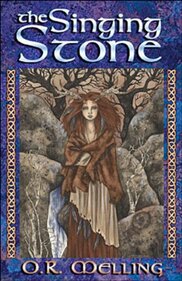 5. The Singing Stone, O.R. Melling One of the older books on the list (published in 1987—so not that old,) Melling’s coming-of-age fantasy novel combines a modern protagonist with the deep mythology and legend of Old Ireland. The story follows a young, orphaned artist named Kay as she returns to her homeland of Ireland from Canada after she begins experiencing dream-visions. In something like a middle grade, Irish version of Outlander (which is definitely adult-only,) Kay is transported back to the Bronze Age where she becomes responsible for recovering the lost treasures of the mythical race known as the Tuatha Dé Danann while a foreign invasion happens around her. With moral lessons that mirror modern ones worked into the complex tapestry of Celtic themes Melling weaves, we’re given historical context along with something to bring into our lives in real time. With excellent ratings across platforms, “it’s a time-slip adventure story with a lot of heart.” Happy reading! This post is part of a series. Read our last modern Ireland post, with picture book recs for our littlest dancers, here. Check out the blog every Monday and Thursday for more posts about Irish history, dance culture, community news, and spotlights on our dancers, staff, and families—among other fun projects! And don’t forget to dance along with us on both Facebook and Instagram.
0 Comments
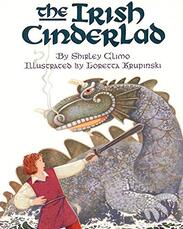 Volume XXVI Children’s Books, Part 4 With summer vacation just now getting underway, there’s a lot of extra time to fill for all our SRL parents! We’re here with some book recommendations for our littlest dancers (aka picture books) to help keep your child’s interest on Ireland and Irish dance over the break while entertaining them. (Maybe it will even inspire some practice!) Enjoy! 1. The Irish Cinderlad, Shirley Climo Illustrated by Loretta Krupinski This one is an incredible mash-up, with a twist to boot: not only is it a reimagining of Cinderella mixed with Irish folklore—it’s a gender-swap with a male protagonist! Becan’s always been worried about his big feet, but his worries multiple when his father remarries and his stepmother and her three daughters treat Becan cruelly. Becan runs away to escape a life with only bread crusts to eat and toiling in the field, and finds himself on a grand adventure. With a magical bull for a fairy godmother for help, Becan defeats creatures out of Irish lore and rescues a princess—running off and leaving only his remarkably large boot behind. When the princess is searching the kingdom for the owner of the giant boot, Becan wonders: what will be his fate when his feet give him away? This book has overwhelmingly positive reviews on Goodreads and Amazon for its mix of familiar fairytale with Irish myth (and for being one of the rare fairytales that centers on a male!)--get a preview with this video of the book being read out loud! 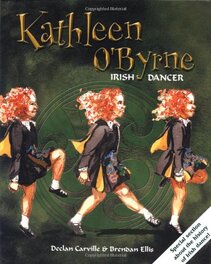 2. Kathleen O’Byrne: Irish Dancer, Declan Carville & Brendan Ellis Books about Irish dance are rare, and we’ve covered a few already in previous posts (check out part 2 or some holiday gift ideas for more,) but if you look hard enough you can find a few hiding out there on the internet! This one tells readers about a young Irish dancer named Kathleen, who practices her jigs, reels, and hornpipes any available moment of the day. Kathleen longs to wear an embroidered dress at a feis like the older dancers, and she’s absolutely crushed when she’s told she isn’t quite ready for that step. However, with the help of some neighborhood friends, she learns how to deal with disappointment and that the most important part of Irish dance isn’t the costumes or competitions, but the joy the art can bring her and others! This very important lesson for any Irish dancer to learn is complimented by beautiful illustrations painted by medical illustrator Ellis and even has a special feature about the history of Irish dance! 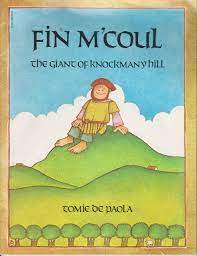 3. Fin M’Coul: The Giant of Knockmany Hill, Tomie dePaola Tomie dePaola’s books are all classics for multiple reasons: his iconic and instantly recognizable illustrations, his ability to translate the mythology of a multitude of cultures for little readers, and his ability to fill any lore with charm, kindness, and grace. This ALA Notable Book is no different as dePaola tackles one of the most iconic stories in Irish mythology: Fin M’Coul and the creation of the Giant’s Causeway. When Fin M’Coul is spending his days in peace on Knockmany Hill when he’s challenged by the Scottish giants across the sea. M’Coul spends his days building a causeway to go confront the Scottish when he learns that a much bigger and stronger giant, Cucullin is the one waiting to fight him. Terrified, M’Coul tells his wife Oonagh of his fears, and she comes up with a clever plan full of magic and cunning to save her husband. Along with the detailed borders based on ancient Irish metalwork, you can’t get more Irish than this! (And don’t miss dePaola’s other Irish books: Jamie O’Rourke and the Big Potato and Patrick: Patron Saint of Ireland.) 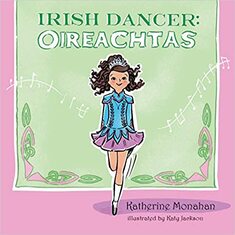 4. Irish Dancer: Oireachtas, Katherine Monahan Illustrated by Katy Jackson That’s right, we managed to find not one, but two books about Irish dance! For our Irish dance parents a little newer to the world, let us explain the second part of the title: Oireachtas (pronounced, roughly, ee-ruck-tuhz) is a larger dance competition for dancers competing at a higher level (a step above a feis, let’s say—you have to qualify to compete!) Monahan is a veteran Irish dancer who started dancing at 9 and ended her career by attending the Oireachtas World Championship in Ireland, so you know she knows her stuff! Accompanied by Jackson’s lively illustrations that help capture the unique movements of Irish dance out in the wider world, this story follows an Irish dancer as she practices and prepares for a big competition. But it’s not just about competing! It’s about determination in reaching your goals, as well as the happiness, confidence, and the strength that comes from the incredible artistic sport of Irish dance—a must read for our future World Champs! Listen to Monahan talk about her book on The Irish Dance podcast here. 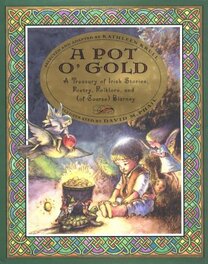 5. A Pot O’ Gold: A Treasury of Irish Stories, Poetry, Folklore, and (of course) Blarney, Kathleen Krull Illustrated by David M. Phail With a classic illustration style that will remind parents of the nursery rhyme treasuries of their childhood, Krull’s collection tackles the huge historical, mythological, and literary lore of the Emerald Isle. Combining everything from beloved recipes and stories to timeless poems by Yeats and Joyce and traditional songs (never forgetting those bits of blarney all the way through,) this collection is meant for families to enjoy throughout the years together. These tales and this rich history has engaged imaginations throughout the world for thousands of years—and these legends of everything from leprechauns and faeries to the real life culture of Ireland helps continue the tradition. A truly unique volume for both its expansiveness (over 50 individual entries!) and its effectiveness, this is one that every generation can enjoy together. Happy reading! This post is part of a series. Read our last modern Ireland post, all about Irish slang, here. Check out the blog every Monday and Thursday for more posts about Irish history, dance culture, community news, and spotlights on our dancers, staff, and families—among other fun projects! And don’t forget to dance along with us on both Facebook and Instagram. Read our last ten fun facts here! 1. The first documented immigrant that passed through Ellis Island hailed from Cork! The 17-year-old girl was named Annie Moore and she was traveling with her two younger brothers to reunite with the rest of their family in New York City on New Year’s Day 1892. 2. There’s a reason Ireland’s so green--County Dublin is home to over 130 named rivers and streams, not to mention innumerable unnamed tributaries! Some of the best names? Bloody Stream, Cemetery Drain, Cuckoo Stream, Kill o’ the Grange Stream, Little Dargle River, River Poddle, Robinhood Stream, Scribblestown Stream, and Sruh Croppa River are some of the most notable! 3. Limerick was briefly a Soviet City. During the War for Independence, the British government declared the area a Special Military Area—but the locals weren’t having it. The Limerick Trade and Labour Council went on strike in protest and declared the city “Irish Soviet.” They went so far as to print their own money and organize food supplies, despite the fact this only lasted for 12 days—April 15th-27th, 1919! 4. One of the most experienced early Antarctic explorers, Tom Crean, was from County Kerry. He was born in Annascaul and went on to join both the Discovery and Terra Nova expeditions (led by the even more famous Captain Robert Falcon Scott,) as well as Ernest Shackleton’s mission aboard the Endurance. He survived it all and went on to open a pub back in Ireland called The South Pole Inn. It’s still in operation today! 5. The first motorboat race in the world (and an international competition, to boot) was held in Cork in 1903! It’s was called the Harmsworth Cup (though it’s now more popularly referred to as the Harmsworth Trophy,) was held in the town of Cobh, and was held through 2011! 6. Little known fact: famed boxer Muhammed Ali has an Irish ancestor—with ties to County Clare in particular. Abe Grady, Ali’s great-grandfather, was born in Ennis before he immigrated to America in 1860. He later married an emancipated slave who became Ali’s great-grandmother. 7. Galway has the largest Gaeltacht (aka “Irish-speaking community” that typically holds fast to Irish traditions and culture) in Europe (and thus, in the world.) Unfortunately, a recent study showed that up to 70% of people in Gaeltacht areas don’t speak Irish (aka Gaeilge) daily (meaning only roughly 27,000 people use it every day,) though there are many movements that hope to preserve the language. 8. While the words “Ireland” and “surfing” don’t seem to have much in common, people have been surfing in Ireland since a man named Joe Roddy cobbled together Ireland’s first surfboard together from spare pieces of furniture in 1949. The sport is currently having a surge of popularity in Ireland—especially as one of the world’s biggest, surfable waves breaks regularly in Mullaghmore, County Donegal. 9. Valentina Island in County Cork is home to the world’s oldest known footprints! Discovered in 1993 by an undergraduate geology student, these tetrapod tracks are thought to be 385 million years old.
10. Dublin is a UNESCO “City of Literature.” This honor was bestowed as acknowledgement for having produced so many literary giants including, but not limited to: Oscar Wilde, James Joyce, and Bram Stoker, as well as Nobel laureates W.B. Yeats, Samuel Beckett, George Bernard Shaw, and Seamus Heaney. (The other recognized cities are: Norwich in England, Iowa City in the USA, Edinburgh in Scotland, Melbourne in Australia, and Reykjavik in Iceland.) This post is part of a series. Read our last fun facts post here. Check out the blog every Monday and Thursday for more posts about Irish history, dance culture, community news, and spotlights on our dancers, staff, and families—among other fun projects! And don’t forget to dance along with us on both Facebook and Instagram. Volume XXV Part 3 Story horse? We’re back again with some of the most confusing Irish slang terms we could find! (Missed part 1 and 2? Catch up here and here!) Note: Just like in America, all slang presented below is regional. And just like America, it's difficult to figure out exactly where a singular word originates from when you're not living there. For this reason, regional information hasn't been included with this post. Jammy Very lucky! Winning-the-lotto type lucky. Used as an adjective, as in, You’re so jammy! Minus craic First, we need to discuss a term you may have thought you already had down: craic (pronounced like “crack.”) It’s most commonly heard as a way to say “what’s up?”—i.e. “how’s the craic?” or as a synonym for fun (which is often described as being “90” when really fun, i.e. “the craic was 90.”) However, there’s yet another way you’ll hear it: minus craic, which is when something is really boring. It’s not just not fun, it’s quite literally negative fun. Slagging Generally, teasing--making fun of someone, but in a friendly or nice way. Friends are just slagging each other. However, it can be used in a harsher way, as well. To slag someone off can mean to insult, criticize or upbraid them, sometimes behind their backs—this one is definitely about the context! Gas Fun or funny! This term is one that we had in the U.S. for a bit in the 50s, but has fallen out of fashion. You would describe someone, something, or an experience as being a gas when they make you laugh or you had a ton of fun doing it! A common way to use to this word is she/he/they/it were a gas altogether, i.e. really hilarious. Giving out To complain or scold someone for misbehaving. A parent might be giving out to their child about acting up in school, or a friend might be giving out to another friend about something their partner did. Usually related to another person’s behavior. Up to 90 Again, while we covered 90 last time as a way to describe the craic (it’s never 80 or even 100, always 90,) there’s another way the Irish like to use this number in their slang in two different ways. When someone says they’ve been up to 90 all day, they mean they’ve been incredibly busy/things have been chaotic. They may also use it as a way to express someone is bull-thick aka very angry, i.e. she’s been up to 90 since she found out I ate all the snacks. Will I, yea? A way of saying “I absolutely will not be doing that” in a sarcastic tone. As in: “You need to stop scrolling on TikTok.” “Will I, yea?!” It’s a definitely Irish way to answer someone—a lot of their slang has to do with opposites (i.e. saying you’re grand generally means you’re not doing so hot.) Yoke
No, this doesn’t have anything to do with eggs or oxen. It’s another catch-all word, this time for any object (a bit like we’d say “thingamajig,”) often used when you don’t know or can’t, at the moment, remember the name of an object. You might hear someone ask: What’s that yoke there? Sure look A catch-all phrase that’s essentially used as a response when you’re not sure what to say, largely to acknowledge the other person is speaking to you (i.e. “It’s so hot out today.” “Ah, sure Iook.”) There’s a ton of ways to use/interpret sure look: “it is what it is,” the person is uninterested in what you’re saying (kind of like mmhmm,) an answer to a rhetorical question, grudgingly accepting your mistakes, positive reinforcement, begrudging respect, to look back with satisfaction, or just as conversational filler. Click the link for example sentences! Give it a lash While lash by itself can mean heavy rain (i.e. “it’s lashing down rain,”) when used in this particular phrase it means to try something out. You’d say give it a lash the same way you’d say “give it a go” in America. (Don’t get it mixed up with being on the lash though—that means you’ve gone out drinking.) This post is part of a series. Check out our last Modern Irish culture post, with some fun Irish snacks, here. Check out the blog every Monday and Thursday for more posts about Irish history, dance culture, community news, and spotlights on our dancers, staff, and families—among other fun projects! And don’t forget to dance along with us on both Facebook and Instagram. Volume XXIV Technological University of the Shannon: Midlands Midwest This week we’re turning our university spotlight to focus on the newest school in the country: TUS Midlands Midwest. This uni was officially opened in October of 2021, but the schools it was formed from have much longer histories. TUS Midlands Midwest is an amalgamation of the Limerick Institute of Technology, which was founded in 1852 (though it’s been through many incarnations,) and the Athlone Institute of Technology, which the Irish government established in 1970. The resources of these two storied organizations are now serving more than 14,000 students on their six campuses across four counties and three provinces: multiple in Limerick City, and then in Athlone, Thurles, Clonmel, and Ennis. Technological University of the Shannon: Midlands Midwest is as expansive as its name implies. First off, the Limerick campuses include the main Moylish campus, just outside the city, with 6,000 students, as well as the Limerick School of Art and Design (LSAD) in the city proper (plus, Coonagh, which holds engineering-focused research facilities—the first in the region!) Said to focus on “active learning through a fusion of theory and practice,” Moylish is the center of much student life—from society events to professional development opportunities. It also includes the 350-person Millennium Theater where the performance arts come to life, as well as the Hartnett Enterprise Acceleration Center, home to at least 20 startups at any given time. While Moylish is slightly outside of the city, LSAD on Clare Street is right in the heart of Limerick. LSAD houses one of the top 50 Fashion departments in the world, augmented by the school’s incredible location that allows for incredible, culturally rich offerings for the art-inclined student. The second principal campus after Moylish is Athlone, which provides over 200 industry-driven courses through the PhD level. These offerings include a large number of pioneering courses, as well as numerous study-abroad opportunities through the over 230 university partnerships the Athlone campus maintains (including in Beijing, New York, and Prague.) From their Business and Hospitality program where you can focus on everything from Tourism to Accounting, to Science and Health with everything from Nursing and Healthcare to Sport and Health Sciences—Athlone has prospects in a variety of industries. And Athlone’s population is around 25,000, making it the perfect balance between the recreation of a city and the coziness of a town. Meanwhile, Thurles maintains TUS’s “Sports Lab,” a world class sports strength and conditioning facility that increases student’s practical learning skills (and whose research is utilized by many sports teams!) The Lab includes: “a unique 3D Organic Motion Capture System for motion analysis, a 45m six lane sprint track especially designed to improve speed, a Paralympic area, cable machines, a range of sport technology systems, including micro electro mechanical systems and GPS systems; Olympic lifting platform; five functional screening kits; weights and the full range of exercise machines.” And just across from campus is the Tipperary Technology Park—making it a truly unique place to support new enterprise development in this field! Then we head over to the Clonmel campus, which is focused on digital subjects. These classes include their innovative Game Art & Design program, as well as Digital Animation Production, Creative Media and Design, and their newest focus: Visual Effects for TV, Film, and Animation. This relaxed, but technically-focused learning space strives for accessibility of cutting-edge tech while fostering creativity and invention. And the location can’t be beat! Right in the middle of the Golden Vale, this large town has everything you could want as a college student—cafes, restaurants, pubs, and culture—with the incredible natural beauty of the area an added bonus. The Suir Blueway Tipperary is just a stone’s throw away to hike or bike, not to mention the watersport opportunities along the river!
Lastly, we have Ennis, known for its small class sizes and Social Care Work courses in the middle of the largest urban centers in the Midwest, which retains its historic charm. However, within the gorgeous late-Georgian architecture, you’ll find thoroughly modern facilities with computer labs and recreational centers where students can complete “a total of 6 degree programs in Social Care, Early Childhood Care, and Education and Business.” Just like TUS’s campus here, this area of County Clare is known for its balance between “then and now,” which means the perfect combination of boutiques and eateries with buildings dating back to 1242 and traditional Irish music around every corner. Essentially, TUS has everything to offer—smaller towns and class sizes or a larger university feel in a larger city—whatever a student is looking for! But there’s one uni left in Ireland we haven’t covered, the most highly specialized on the list. Visit the blog next time to learn more! This post is part of a series. Read modern Ireland post, all Irish snack foods, here. Check out the blog every Monday and Thursday for more posts about Irish history, dance culture, community news, and spotlights on our dancers, staff, and families—among other fun projects! And don’t forget to dance along with us on both Facebook and Instagram. Volume XXVIII Nothing tells you more about a country than its unique and delicious snacks! From Australia’s fairy bread and Greece’s koulouri to Japan’s crazy-flavored Kit Kats and Scotland’s Irn-Bru, the world holds innumerable delicacies that you’ve never even heard of—including Ireland! Here’s five more snacks the Irish love (at least in some parts of the country): Spice Burgers To understand spice burgers, you first need to know what a chipper is—essentially, a little mom-and-pop, hole-in-the-wall takeaway restaurant where the majority of things are deep-fried (remember: chips are fries!) The staple meal is fish and chips, but chippers offer a variety of options, including the ever-popular spice burger. These are made of ground beef (hence burger,) mixed with “onions, cereals, and herbs and spices, coated with a traditional outer crumb.” This isn’t served with a bun though, just as a patty alongside your chips. Spice burgers remain so popular that when Walshs, the inventor and main supplier of spice burgers, went out of business in 2009 due to the recession they were back in business within the year (the public outcry was just too loud!) Flying Saucers A classic candy in Irish memory, flying saucers get their name from their unique shape—they look, undeniably, like our imaginings of an alien spacecraft. Also called satellite wafers, the candy gained popularity during the Space Race of the 1960s, when they spread across the UK and Ireland from their Belgian origins. The candy itself comes in a variety of pastel colors per packet and is made of a crispy rice paper shell that melts in your mouth to reveal little sour-sweet beads inside. The interior is made of a candy called sherbet, a fizzy candy powder otherwise eaten with the aid of a lollipop—akin to Baby Bottle Pop or Fun Dip (but in its own container—so maybe more like Pixie Sticks, though don’t eat that paper!) Crisp Sandwich Many Irish people refer to this simple snack as a “delicacy”—it’s that beloved. And it’s exactly what it sounds like: chips aka crisps (preferably Tayto’s, and preferably Cheese and Onion flavor,) butter (Kerrygold is recommended,) and white sandwich bread (try Brennans if you can.) That’s it! Beyond the importance of the above ingredients, tips include: making sure the butter is soft so it doesn’t rip the bread, don’t add any fancy spices and herbs, and of course, make sure to make two—once you start, you’re going to want more. There are definitely personal variations out there, but for some things, simplicity is what makes it good (and crisp sandwiches are definitely one of those things.) Ribena What’s always interesting is what flavors are most popular in different countries. While America loves its cherry and blue raspberry, Ireland tends to favor blackcurrant—as evidenced by their love of the juice drink Ribena. Technically a British import (it was invented in 1938 in England as a source of vitamin C for children during the war,) Ribena is flavored with the tart-sweetness of the blackcurrant berry and comes either carbonated or non-carbonated. Though it was originally advertised as a healthy option, it’s generally considered a soft drink these days due to its sugar levels. But if it’s so good, why don’t we have it here? Blackcurrants are a banned crop in the United States, as they can carry a fungus that kills pine trees! Dulse and Yellowman
You may have thought a sandwich with just butter and potato chips was going to be the strangest snack on the list, but this regional treat takes that title! Dulse and Yellowman is the unexpected pairing of a purple seaweed called dulse that’s been dried into chewy chips and a type of toffee-like honeycomb called yellowman—reflecting its intense hue. This is a Northern Ireland specialty, as that’s where dulse is native to, where this salty-sweet snack has been sold for hundreds of years! It’s traditionally sold and eaten at the Auld Lammas Fair at the end of each August, held in Ballycastle, County Antrim—so this is definitely more of a special treat than an everyday snack! Of course, thanks to the power of the internet, you can get essentially all these items here these days (yes, even dulse!)…and we know this made us hungry for a taste of Ireland. Happy snacking! This post is part of a series. Read our last modern Ireland post, all about Munster Technological University, here. Check out the blog every Monday and Thursday for more posts about Irish history, dance culture, community news, and spotlights on our dancers, staff, and families—among other fun projects! And don’t forget to dance along with us on both Facebook and Instagram. Volume XXVII Munster Technological University We officially have the newest university on the list: MTU aka Munster Technological University, officially founded in 2021! But don’t let this school’s recent birthday fool you, this school’s six campuses in two different Munster-based cities have a wealth of education awaiting their students. An amalgamation of multiple (already existing) different technical and specialty schools, MTU has a student body of approximately 18,000 students supported by over 2,000 staff members, in more than 140 courses and programs! All located in the southwest of Ireland, the majority of the student body resides in the 4 campuses located in Cork—the second largest city in the country. Cork is known as the culinary center of Ireland (make sure your student checks out the English Market—the oldest and longest running food market in Europe,) and is compact enough for students to navigate without trouble. It also hugs Ireland’s coast—making the weather more temperate and the views unmistakable! If your student’s studies take them to MTU’s other two campuses, located in coastal, pastoral Kerry, they’re in for a special 4 years. Kerry’s known for its stunning natural beauty (from the Ring of Kerry to the Skellig Islands,) and is also home to Ireland’s oldest traditional fair (the Puck Fair)—there’s a reason County Kerry is Ireland’s most popular tourist region. On top of that, both areas are known for their lively arts scenes! Technological schools have the reputation of concentrating on STEM-subjects only, but MTU has opened its doors and mind to a wider range of subjects. While you’ll certainly find Business, Engineering, Science, Nursing, and Computing (along with tech-focuses, more specific subjects in STEM like Pharma and Agri-Food,) the school is also known for its stellar courses in Tourism, Humanities, and Arts and Music (among so many more!) MTU has more than 120 college partnerships worldwide to make sure their students are able to expand their education in whatever direction their studies take them. Students are encouraged to partake in multidisciplinary research and study, only augmented by small class sizes and the university’s acclaimed “ladder” structure that helps students progress through different levels of accreditation and qualification in their chosen field. However, MTU’s pride and joy is its focus on maintaining close links to a multitude of industries, operating a vibrant innovation center that encourages entrepreneurial spirit that helps launch startups! Don’t have a company idea? That’s okay—there’s six research centers in any discipline you can imagine (and open to new ideas!) and a wealth of internships to be had through MTU’s industry-connections. The emphasis throughout a student’s time at MTU is on learning through practical application so students have the education and necessary skill set to thrive in our current, tech-driven economy. There’s a reason that when they were called CIT (Cork Institute of Technology,) they were the Sunday Times’s “Institute of Technology of the Year” 3 times! (Including in 2021!) Student life at MTU (both campus locations!) is a rich one—and not just because of the incredible locations. Beyond the newly renovated sports complex on the Cork campus, there are over 100 clubs and societies available to join, and a ton of resources for international students! 10% of the students in the city of Cork are international, so there’s a thriving ex-pat community. And unlike many Irish institutions, there’s even an office to help students find accommodations—MTU is definitely a school looking out for its learners!
But there’s one more technological uni left in Ireland to explore—join us next time for a trip to the Midlands! This post is part of a series. Read our last modern Ireland post, all about Technological University Dublin, here. Check out the blog every Monday and Thursday for more posts about Irish history, dance culture, community news, and spotlights on our dancers, staff, and families—among other fun projects! And don’t forget to dance along with us on both Facebook and Instagram. Read our last ten fun facts here. 1. Newgrange, an exceptionally large and well-preserved grand passage tomb built by prehistoric farmers, is 5,200 years old (having been built around 3200 BC.) Located in County Meath, near the River Boyne, this monument is older than the Egyptian pyramids and Stonehenge! 2. While there’s a long-standing a negative stereotypes about Irish aggression (due in largely to The Troubles,) Ireland’s real legacy is that of peaceful protest. Daniel O’Connell, an Irish nationalist and revolutionary, didn’t want to repeat the violent upheavals France had suffered and instead advocated for nonviolent measures during his successful Catholic Emancipation movement in the first half of the 19th century (leading the way for Gandhi and Martin Luther King, Jr., among others.) 3. Currently, 17% of people living in Ireland are of foreign birth. 46% of these new inhabitants arrived in just the last 5 years, putting Ireland far ahead of most OCED countries (with a 22% average.) This is a steep increase is likely due to Ireland joining the EU as 20 years ago that number was only 2%! 4. The President of Ireland plays a slightly different role than ours (beyond the fact that while he’s elected by the people, he serves a 7-year term!) While he has certain powers, the actual head of government is the Taoiseach (Ireland’s Prime Minister)—a person appointed by the president! 5. Speaking of presidents, 23 out of the 46 presidents the United States has had since its founding have at least some Irish ancestry. And that includes 6 of the last 7—Reagan, the Bushes, Clinton, Obama, and Biden! (Though JFK’s the president we think of when we think Irish!) 6. On the flip side, Ireland has the highest net emigration level in Europe, with approximately 1 in 6 people over the age of 15 living abroad. That’s about 17.5% of the population! 7. The first potato planted in Ireland (which, despite them being an Irish staple now, didn’t happen until 1589) was planted in Cork by Sir Walter Raleigh (yes, that guy from Disney’s Pocahontas--though that was a pretty skewed version!) The potato isn’t native to Europe, but rather, Peru! 8. Dublin was founded by Vikings—not once, but twice. First, in 841 AD, and then again in 917 (Scandinavian settlers were briefly expelled in 902, but they came back.) It stuck the second time, becoming an extremely wealthy port city that’s remained the hub of Ireland’s political life ever since!
9. But modern Dublin is considered Europe’s answer to the U.S.’s Silicon Valley—in the last 20 years, the city has become the European base to some of the largest tech companies in the world. This largely has to do with the fact it’s considered a tax haven for large companies, leading Google, Etsy, and Facebook, among others, to land there. 10. There’s no direct translation of the words “yes” or “no” in Irish (aka Irish Gaelic or Gaeilge.) While this sounds impossible to English-speakers, it just means the Irish need to use a few extra words in order to reply with the negative or positive. (I.e. If you ask “Would you like…?” in Irish, you could respond: Ba mhaith liom i.e. “I would like…”) This post is part of a series. Read our last fun facts post here. Check out the blog every Monday and Thursday for more posts about Irish history, dance culture, community news, and spotlights on our dancers, staff, and families—among other fun projects! And don’t forget to dance along with us on both Facebook and Instagram. Volume XXVI Technological University Dublin For this one, we have to start with a little clarification, as a technological university is a little different from your standard school. While your ordinary university generally covers the whole gamut of subjects available to study, technological schools are usually more STEM-based (i.e. science, technology, engineering, and mathematics.) However, that doesn’t mean the arts and humanities are ignored (STEM is often now called STEAM or STREAM for this reason—adding the arts and reading back in as they only augment and enrich a science-based education)—just that the main focus of the uni tends to swing in the direction of science. Technological University Dublin is no different! While TU Dublin’s main focus is on STEM subject matter, it even has an entire school devoted to Arts and Tourism, attracting students across a wider variety of disciplines than their name might suggest. This becomes even more clear when you learn that TU Dublin is the second largest university in Ireland, with over 28,500 enrolled! These students attend class over five different Dublin-based campuses--Grangegorman, Aungier Street, Bolton Street, Blanchardstown, and Tallaght—each of which mixes the forward gaze their technological school status suggest with Ireland’s most historic cityscape. Grangegorman is the flagship campus (with over a third of the students based there,) and includes one of the gems in TU Dublin’s crown: the Greenway Hub. This brand new and state of the art facility houses the Environmental, Sustainability, and Health Institute, as well as the DIT Hothouse with its start-up incubator. TU Dublin funds many student start-ups themselves, but also partners with multiple companies to help get entrepreneurial students the leg up they need—not to mention access to top-shelf staff, mentors, and research facilities. TU Dublin as it currently exists is a relatively new school, technically only established in 2019. It’s past has much deeper roots, though—the original iteration, the City of Dublin Technical Schools, dates back to 1887, and the school has been adapting, growing, and absorbing other technical universities along the way ever since. While history can sometimes mean everything in a country as old as Ireland, TU Dublin’s dedication to revising itself is a testament to its current motto: Fédearthachtaí as Cuimse, aka “Infinite Possibilities"—this is a school committed to the cutting edge, doing all they can to help their students solve the world’s most pressing challenges and needs as they arise. A final count of all the different technological schools represented under the TU Dublin banner racks up to (approximately) nine! While this relatively young university may fall behind in the rankings compared to some of Ireland’s more storied institutions (in the top 1000 schools in World University Rankings versus others under the 500 mark)--it does rank in the 200s when it comes to Impact, and in the top 400 in Young Universities. In terms of student satisfaction, it’s a definite win: the research site Study Portals ranks TU Dublin (in their cumulative Global Student Satisfaction Awards) at a 4.0 Overall Satisfaction and Student-Teacher Interaction, a 4.1 for Quality of Student Life, an impressive 4.4 for Student Diversity, and a whopping 4.6 for the ease of the Admissions Process. This reportedly stems from the breadth of student accommodation, the sheer number of societies and sports clubs, extensive library services, as well as its stand out: their comprehensive ICT services that make sure students have the most up to date technological services at their fingertips. And all that without mentioning the benefit of living in Dublin! Whether you’re there for app development, environmental studies or the creative arts, in the School of Media or the College of Sciences and Health, TU Dublin lets students live smack in the middle of an intellectual, cosmopolitan city. From the history and culture to the unending activities and excellent public transport (not to mention ease of travel to other European destinations,) Dublin is an incredible place to experience college life! But Dublin isn’t the only place worth visiting in Ireland! You’ll have to tune in next time to learn about another technological university—but in Munster! This post is part of a series. Read our last modern Ireland post, with some YA book recs, here. Check out the blog every Monday and Thursday for more posts about Irish history, dance culture, community news, and spotlights on our dancers, staff, and families—among other fun projects! And don’t forget to dance along with us on both Facebook and Instagram. 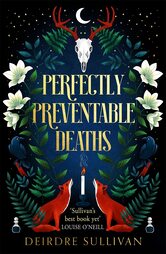 Volume XXV Young Adult Books, Part 2 Check out part 1 here! As the school year creeps to a close, it’s easy for our YA-aged dancers (somewhere in the 13 to 18-year-old range) to feel bogged down all their school work. So why not give them something to read for fun instead? We’ve gathered together five (very different) YA books by Irish authors, set in Ireland, perfect for the YA Irish dancer in your life! 1. Perfectly Preventable Deaths, Deidre Sullivan In the first part of this two-book series, readers are introduced to 16-year-old twins Catlin and Madeline as they move into a castle located in a small, isolated Irish town called Ballyfran. Even as the girls begin to grow apart—Madeline discovering her skill at witchcraft, and Catlin falling in love—they begin to realize that Ballyfran isn’t all that it seems. The seemingly sleepy town holds many a dark secret (and more than a few even darker inhabitants,) including the fact that for the past 60 years, teenage girls have mysteriously gone missing from the town. When Catlin finds herself in trouble, Madeline must really look at who she is—and who she’s willing to become—to help her sister. Eerie and haunting, but beautifully wrought, Sullivan’s book is full of twists and turns as if the reader is traversing the darkling wood alongside the twins as readers reflect on family and sacrifice. 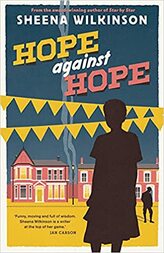 2. Hope Against Hope, Sheena Wilkinson Wilkinson, a five-time winner of the Children’s Books Ireland award (among other accolades,) tackles one of the most turbulent times in Irish history in this emotive and moving novel. Polly is a 15-year-old girl in 1921, living in the fictional town of Mullankeen near the border that’s been recently drawn between Ireland and Northern Ireland. When Polly’s difficult home life becomes too much, she takes off to even more turbulent Belfast where she finds solace and a new home at Helen’s Hope—a feminist and non-sectarian hostel for young women. Set against a richly described backdrop of a gritty and violent Belfast, Wilkinson balances the historical details against a character-driven plot that tells us more of the time than history books alone. This book is technically the third in a loosely connected series depicting important events through a young, female protagonist—readers can also check out Name Upon Name, set in 1916 during the Easter Rising, as well as Star Upon Star, which depicts the General Election of 1918, when woman first had the right to vote in Ireland. 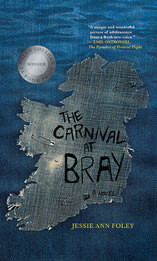 3. The Carnival at Bray, Jessie Ann Foley In this award-winning (and heavily nominated) book, Foley tells the story of 16-year-old Maggie Lynch as she’s made to move from Chicago to a small town on the Irish Sea with her mother and her mother’s latest boyfriend. The year is 1993, and Maggie misses the music scene of the big city and her grunge-rocker, 20-something Uncle Kevin, finding it just as hard to fit in in Ireland as she did in America. However, the small town begins to open a new world to her and through her friendships with the locals—a 99-year-old man, a bookish girl, and sweet boy she may just be falling in love with—Maggie finds pockets of security in amidst familial turmoil. With the twin formative experiences of death and first love happening in tandem, this powerful and transformative story anchors itself in the evocative and deeply felt world of music. Make sure to check out more of Foley’s work as well—the Irish-American streak runs strong! 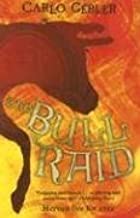 4. The Bull Raid, Carlo Gébler On an original and very different note, Gébler’s adapted a famous, epic Irish poem, “The Cattle Raid of Cooley” for YA readers, melding ancient myth with modern telling. Presented as a story within a story, almost lost to time, the narrative follows the half-human, half-god Cuchulainn. Since childhood, Cuchulainn has shown himself to have supernatural powers, including escaping from the curse that plagues the rest of the men of Ulster. The curse saps the strength of the men during the winter, leaving the covetable Brown Bull of Ulster vulnerable to attack by the renowned Queen Maeve of Connacht–which leaves Cuchulainn to take on an army all on his own. Gébler takes an old tale and breathes new life into it, creating real characters out of legend—including a teenage boy with too many responsibilities on his plate—in this beautifully told, if sometimes brutal, saga. 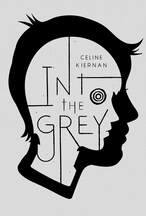 5. Into the Grey, Celine Kiernan Kiernan’s novel brings us a rarity in typical YA fiction: a male protagonist. Well, two! Twin brothers Patrick and Dominic are devastated when their family home burns down and they’re forced to move into a summer seaside cottage in mid-winter. This eerie, fog-drenched, Irish setting sounds like the setup of a ghost story—because that’s exactly what it is. Pat and Dom are beset by nightmares soon after they move in, but slowly discover that these nightmares aren’t just their imaginations, but something more sinister from the past. Set in the early 1970s, Kiernan combines family and local history into a story about love, loyalty, and what we’ll do to protect those we care about in this deft combination of historical and supernatural fiction. Poetic, touching, and occasionally scary, this energetic story is punctuated by Irish diction that helps you sink into the world of the story. Want a few more options? Check out this great list of YA by Irish authors! Happy reading! This post is part of a series. Read modern Ireland post, all about DCU, here. Check out the blog every Monday and Thursday for more posts about Irish history, dance culture, community news, and spotlights on our dancers, staff, and families—among other fun projects! And don’t forget to dance along with us on both Facebook and Instagram. Volume XXIV Dublin City University With four major universities and approximately 120,000 students within the city limits, it’s not surprising that we’re turning the spotlight back to Dublin again. This time our focus is on Dublin City University (DCU,) one of Ireland’s youngest (but up and coming!) universities. Founded in 1975 as the National Institute of Higher Education, Dublin, the school first enrolled students in 1980 and was elevated to the university rank in 1989. These days, it’s a thriving 85-acre campus with over 17,000 students (one-fifth of them international) and a thoroughly modern approach to education that’s led to its inclusion on the Times Higher Education Young University rankings year after year. DCU’s motto is “Ireland’s University of Enterprise” and its take on revamping the Irish higher education system is the perfect example of how it lives up to the name. Beyond holding its own as a research-driven institution that’s led to it becoming one of Ireland’s fastest growing universities, DCU takes an extra step in fostering entrepreneurship with its technologically advanced Innovation and Enterprise Center—“The Invent.” This center is “the university’s commercialization and technology transfer unit where we work with companies and organizations to bring university research to the marketplace.” DCU works with companies of all sizes, connecting them with talented researchers and supporting startups both financially and through access to top research. On the student side, that means research funding while your intellectual property rights are protected with built in networking to help get your ideas to the open market. DCU’s main research focuses span subjects falling under the following areas: health technology for a healthy society, educational research and innovation, democratic and secure societies, information technology and digital society, sustainability in economics and societies, and advanced manufacturing and materials. There’s a strong focus on interdisciplinary research, as DCU recognizes that “the greatest impact is achieved from a critical mass of multidisciplinary researchers tackling major research challenges. Such is the nature and complexity of these challenges facing the world that international collaboration is essential to make significant and sustained advances.” DCU is a truly modern university that is looking outward, toward global rather than institutional advancement. But DCU’s innovations don’t stop at science, technology, and business, but cover the arts and humanities, as well. The impressive John and Aileen O’Reilly Library boasts 400 workstations, 1,200 seats, and 18 group rooms and “bills itself as the first university library to put digital records on the same footing as books and journals, granting access to some 250,000 volumes, a number that is growing as technology improves.” This has been a huge boon during Covid, as it’s allowed the university to continue with its record of academic excellence, all while shifting learning methods. Student life is just another part of the college experience that DCU excels at! The school had multiple campuses—all situated in Northern Dublin closely enough that students can walk or cycle between them—that marry the social life of campus societies, clubs (over 120 to choose from!), and events with city living. DCU is one of the few Irish universities that has guaranteed housing for first year students on campus (and a host of other accommodations, as well!) Many students still chose to live in the city, as Dublin is known for its bustling nightlife, amazing restaurants, historic curiosities, and extensive galleries and museums, to say nothing of the many concerts, festivals, and events the city hosts every year. DCU might not have a storied history like some other schools, but it definitely has a bright and vibrant future with all it has to offer!
But we’ve still got one more university in Dublin to cover! Join us next time where we’ll take a look at Technological University Dublin! This post is part of a series. Read modern Ireland post, all about kid-friendly Irish films, here. Check out the blog every Monday and Thursday for more posts about Irish history, dance culture, community news, and spotlights on our dancers, staff, and families—among other fun projects! And don’t forget to dance along with us on both Facebook and Instagram. 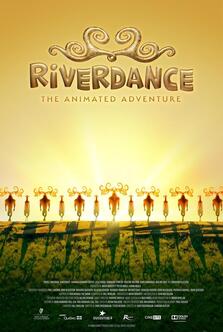 Volume XXIII Children’s Movies, Part 2 As March comes to a close, so does much of the celebration revolving around Ireland—but for an Irish dancer, that never really ends! Participating in Irish dance is a year-round celebration of Irish culture and music, so why not bring that into your home? Here are five kid-friendly films revolving around Ireland and Irish lore (including a particularly exciting new release, all about Irish dance!) 1. Riverdance: The Animated Adventure (2021, G) 77% Rotten Tomatoes 5.5 IMDb Watch on Netflix For the little Irish dancer, this is the most exciting new release in years! (And this film has led a lot of new dancers to SRL’s doors, so you know it’s got to be good.) The film follows a young boy named Keegan from the Irish village of River’s End where his grandfather (a former Irish dancer) loves to tell him stories from Irish lore—like the tales of the giant deer called Megaloceros Giganteus whose magical dancing gives water and life to the region. However, when Keegan has to face the loss of his beloved grandfather and the new responsibilities that come with it, he’s understandably overwhelmed. With the help of his Spanish friend, Moya, Keegan travels to a land of myth and legend where he learns his grandfather’s stories were more than stories—and his village may be in trouble! Full of fun and whimsy, with plenty of Irish culture thrown in (though brought together in a whole new fairytale,) the music and dance sequences will have your dancer jigging along! (And with Pierce Brosnan, Brendan Gleeson, and Lily Singh among the talented voice actors, there’s something for the adult viewers, too.) 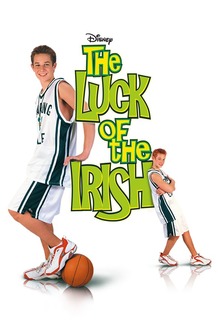 2. The Luck of the Irish (2001, G) 53% Rotten Tomatoes 6.2 IMDb Watch on Disney+ Millennial parents might remember this one! While this isn’t the most Irish movie on our list per say, this Disney Channel Original Movie has the nostalgia factor for some, and doesn’t skimp on the entertainment for new little viewers. Junior high basketball player Kyle Johnson seems like just your average teenager, with more than average luck—but he doesn’t know the details of his family’s history. When Kyle finds out his family’s secret, straight out of Irish lore, he also learns the importance of honoring your past while concentrating on the present—with some leprechaun-laden hijinks in between. It’s not the most cohesive film of all time, but that’s part of the fun! It’s a little bit of St. Patrick’s Day silliness for young watchers who will love a scene of leprechauns playing basketball and won’t question magical gold coins dispensing luck. It’s classic 2000s Disney Channel in every possible way—ridiculous, but a heart (or pot) of gold. 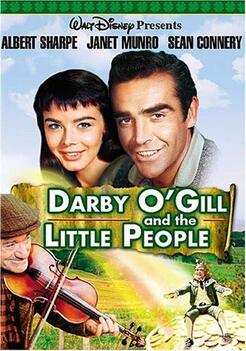 3. Darby O’Gill and the Little People (1959, G) 77% Rotten Tomatoes 7.2 IMDb Watch on Disney+ The oldest film on the list, but the second with Disney origins, this film was the brainchild of Walt Disney himself (conceived of on a trip to Ireland and announced there in 1948—though it would take a decade for the film to be made due to WWII.) The story follows the titular Darby O’Gill who’s railing against being forced into retirement when a scare from a pooka causes him to fall down a well and into the stories of his ancestors. What follows is a rollicking adventure where Darby must match wits with the King Brian of the leprechauns to win his proverbial pot of gold. A young Sean Connery plays Darby’s replacement (and his daughter Katie’s love interest—and no, that’s no actually him singing,) and the film uses camera tricks rather than our modern CGI to create the leprechaun illusions—a fun throwback to another time. While kids may not recognize the nostalgia, they’ll enjoy this early Hollywood film that feels fully Irish, rather than Irish-American (don’t take my word for it, check out this think piece in The Irish Times.) 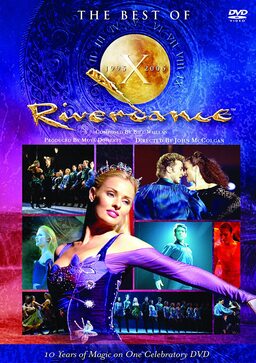 4. The Best of Riverdance (2005, Unrated) 7.9 IMDb 4.5/5 Amazon Buy on Amazon So this one isn’t a narrative storyline like the others, but it is a must-watch for those just beginning to fall in love with Irish dance! This may be a documentary, but the majority of screen time is devoted to incredible dancing, from the original stars Michael Flatley and Jean Butler to the most recent performances. Included are clips of the original 1995 Eurovision contest performance, a 1997 New York performance with Colin Dunne replacing Flatley, and a 2003 performance in Geneva featuring new leads: Brendán de Gallaí and Joanne Doyle. As the show has gradually evolved over the years with its different performers, this film is a rare and unparalleled experience as it splices three different iterations of the spectacular stage experience together into one. (And, if you’re interested in more of the history, the DVD includes behind the scenes footage, a separate documentary, and further performances!) Want a preview? Check out “Reel Around the Sun” (from 11 years ago, a 1996 New York performance!) here. 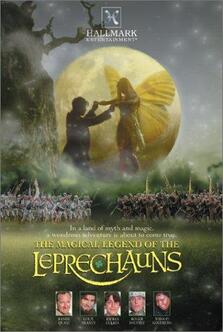 5. The Magical Legend of the Leprechauns (1999, PG) 80% Rotten Tomatoes 7.1 IMDb Watch on Prime Here’s the thing—children’s movies about Ireland are pretty heavy on the leprechauns, which is how we ended up with three on this list. However, this is the only one with Whoopi Goldberg (yes, you read that correctly.) But let’s backtrack a moment: this made-for-TV fantasy film follows two storylines—one about an American businessman visiting Ireland who makes a leprechaun friend, and the second about a pair of star-crossed lovers à la Romeo and Juliet (if they were a faerie and a leprechaun.) The two storylines eventually entwine, but the journey there is full of magic and whimsy, and the overarching theme of the power of love. Also starring Randy Quaid and a very young Kieran Culkin, among other familiar faces, the film is reportedly “charming” (at least to those at Variety,) though it has more than its fair share of fantasy tropes (which is sometimes just the thing for relaxing viewing.) Just give this wonderfully dated trailer a look-see! Happy viewing! This post is part of a series. Read our modern Ireland post, all about St. Patrick's Day around the world, here. Check out the blog every Monday and Thursday for more posts about Irish history, dance culture, community news, and spotlights on our dancers, staff, and families—among other fun projects! And don’t forget to dance along with us on both Facebook and Instagram. 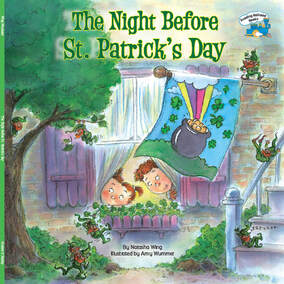 Volume XXI Children’s Book Recs, Part 3 St. Patrick’s Day Edition! What better way to get your dancer excited about St. Patrick’s Day than a good book? We’ve gathered five books themed around March 17th and all the traditions that come with the holiday here for you! (And if you’d like a few more suggestions, check out our first two sets of Irish children’s book recommendations here and here!) 1. The Night Before St. Patrick’s Day, Natasha Wing Illustrated by Amy Wummer Wing’s imaginative tale is part of a series of “The Night Before…” books, all modeled after (and in the verse form of) the Christmas classic, but taking place just before alternative holidays. Full of humor and whimsy, the story follows siblings Tim and Maureen as they stay up the night before this Irish holiday setting traps to catch, you guessed it, a leprechaun! The story breaks from its source material by extending into the next day, when the kids awaken to the smell of green eggs cooking and the sound of Dad’s bagpipes (no, this isn’t a mistake, there’s Irish bagpipes too!) But what are they supposed to do when they realize their trap actually worked? Will they be able to get the leprechaun to lead them to his pot of gold, or will the little trickster outsmart them? If you want a preview of the story before buying, check out a read along here! 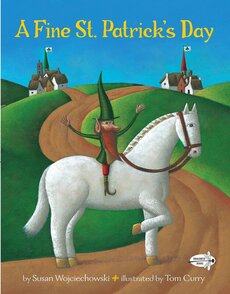 2. A Fine St. Patrick’s Day, Susan Wojciechowski Illustrated by Tom Curry With a moral that stays solid rather than straying into the saccharine, Wojciechowski brings readers the story of two rival villages: Tralee and Tralah, who compete each year in a St. Patrick’s Day decoration contest. Our heroine, feisty but kind six-year-old Fiona O’Reilly, lives in Tralee—the town who’s never quite won the golden shamrock for best decorations, but she knows this will be their year. But when a small stranger appears in Tralah needing help to rescue his cows, only to be turned away by the busy villagers, Fiona is the one who keeps her priorities in check. Rallying her own town to the man’s aid, even though it takes them away from their contest preparations, Fiona’s kindness (and the town’s) is rewarded with a little Irish magic! Richly illustrated with gorgeous, bold paintings of a bucolic green countryside, this tale is one of cooperation and compassion over personal gain. See a read along of the story here! 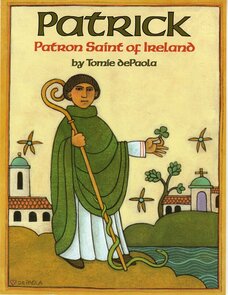 3. Patrick: Patron Saint of Ireland, Tomie dePaola If you want to go with a slightly more historical route, check out renowned author-illustrator Tomie dePaola’s child-friendly account of the man the holiday is named for! A Connecticut native (Meriden-born!), dePaola is the product of an Irish-Italian upbringing and his bold and rounded, simple but effective, artistic style is immediately familiar to anyone who was a child from the 1970s-today. Best known for his Strega Nona books, among others, dePaola brings the folktales and customs of a variety of cultures to life, including his own Irish heritage (this book about St. Patrick is one of many!) The narrative covers both all we know to be true about St. Patrick—from his noble upbringing to his captivity in Ireland and subsequent visions that led him to his spiritual vocation—and all the rumored folklore (from driving out the snakes to his association with the shamrock.) As dePaola has won virtually every awards a children’s book author can, you know this one will be both entertaining and educational! 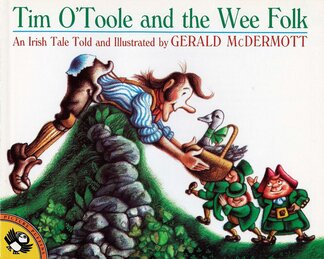 4. Tim O’Toole and the Wee Folk, Gerald McDermott Caldecott Medalist author-illustrator McDermott is, like dePaola, known for his impressively diverse work that travels the globe to teach children about different cultural mythologies. And among his man tales, we have one that focuses on the most popular of Irish myths: the leprechaun. Based on a tale common to many mythologies—a man who wins three magical gifts/wishes—McDermott brings this familiar tale to new life with his “well-honed, Irish lilt” and “lively, expressive” illustrations. This story of a poor Irishman and his wife (Tim and Kathleen) who stumble upon some kindly, but mischievous leprechauns (and the dastardly landlord Mr. McGoon!) is both a delight for kids and teaches an important lesson about following directions! Enjoy this read-along before buying! 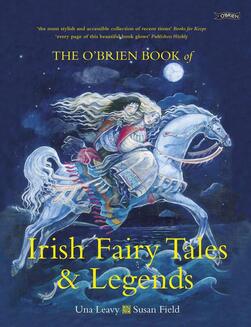 5. The O’Brien Book of Irish Fairy Tales and Legends, Una Leavy Illustrated by Susan Field Irish author and poet Leavy brings ten classic tales from her homeland’s lore to life in this richly illustrated collection. Irish fairy tales are sweeping epic stories of bravery, lost love, and the oldest magics, certain to enchant readers of all ages. From tricky leprechauns (certainly a theme in all St. Patrick’s Day books!) and Oisín’s descent into Tir na nÓg to the sad tale of the Children of Lir, Leavy’s training as a poet, as well as Irish oral tradition, shines through her beautifully told takes on the age-old fables. Complete with an Irish Gaelic pronunciation guide that will help you and your dancer read along, this book captures the true spirit of St. Patrick’s Day in its skillful and faithful adherence to Irish cultural tradition. Not to mention the beautiful illustrations—which Field has said were all inspired by ancient, Celtic artwork—that help you see these tales through new eyes. (And consider trying the audiobook simultaneously—narrator Aoife McMahon’s beautiful accent does wonders to make you feel like you’re really in old Ireland as you read!) We hope these get you and your dancer into the St. Patrick’s Day spirit--Lá Fhéile Pádraig sona duit! This post is part of a series. Read our modern Ireland post, all about NUI Galway, here. Check out the blog every Monday and Thursday for more posts about Irish history, dance culture, community news, and spotlights on our dancers, staff, and families—among other fun projects! And don’t forget to dance along with us on both Facebook and Instagram. Volume XIX University College Cork We’re traveling to a new part of the country for this week’s uni spotlight: picturesque Cork! University College Cork (UCC) is perched on a limestone bluff above the River Lee, a beautiful spot chosen for its proximity to Saint Finbarr’s ancient monastery and school. Saint Finbarr is the patron saint of Cork, as his monastery essentially founded the city, and was the impetus for the school’s motto: Where Finbarr Taught Let Munster Learn. The school was originally established by Queen Victoria at the same time as universities in Belfast and Galway in 1845, but became a national university in 1908 with the enactment of the Irish Universities Act. Today, UCC is an award-winning university in every category with approximately 22,000 students (about 3,000 international, from 104 different countries!) They’ve even received an “Award for Outstanding International Student Satisfaction” with a score of 9.5, with their International Education Office at the forefront of adapting students to life in Ireland. Students can study almost anything they can dream of and receive a degree in 3-4 years, with the school roughly divided into four colleges: Arts, Celtic Studies, and Social Sciences, Business and Law, Medicine and Health, and Science, Engineering, and Food Science. UCC consistently ranks in the top 300 universities in the world and has a student rating of 4.4 stars (by survey site StudyPortals) for its high quality of both study and student life. It’s also been named Irish University of the year on five separate occasions by The Sunday Times. UCC is considered the leading research university in the country (and top 2% worldwide,) with the highest research income in the state (in 2016, for example, the university had €96 million in funding and a five-year allocation plan.) The university chooses what research to fund based on global need for innovation, considering impact over monetary gain, and its top research subjects include food, health, and perinatal medicine. Many top research labs are located at UCC, including the Environmental Research Institute (which studies climate change, sustainable living, and the circular economy) the APC Microbiome Institute (which looks into alimentary health and functional foods,) and the Tyndall National Institute (concentrating on microsystems, nanotechnology, and photonics.) But science isn’t the only place where UCC is innovating: the university houses 40 Gateway companies that were started as high-potential start-ups with UCC’s support. With a focus on entrepreneurship, UCC enjoys a graduate employment rate of over 90% with many courses of study including internship and work-study programs (often utilizing the on-campus companies!) Even their Humanities programs put innovation first with its groundbreaking Digital Arts and Humanities degree, which utilizes technologically advanced tools to explore the arts of humanities in new, pioneering ways. (Though, don’t worry, it’s set against Ireland’s rich history—for example, the university’s extensive archival holdings include the Ogham Stones, the earliest known artifact of a written Irish language.) Alongside the rigorous academics, attendees experience a balanced student life living on a quiet campus in the middle of a bustling, cosmopolitan city (this is another college, like most in Ireland, with a wealth of student-friendly accommodation throughout the city, versus on campus—though there is international student housing.) Cork is the second largest city in Ireland, after Dublin, housing everything from the famed Blarney Castle and Crawford Gallery to jazz festivals and culinary marvels. The campus also strikes a balance between the old and the new: while the Aula Maxima (the “Great Hall”) is original to the school’s 1847 construction, UCC was the first school to be awarded the international Green Flag for its environmental friendliness. This sense of history within positive change creates a close community at University College Cork—from long held superstitions (it’s rumored if you walk across the Aula Maxima’s quad before graduation you risk failing your exams) to over 100 student societies (including a beloved Irish language club,) 50 sports clubs, and innumerable charitable efforts throughout all the various colleges. UCC is undoubtably a place that both holds the past close while looking forward!
Next time, we’re off to yet another part of Ireland: Galway! Check back soon! This post is part of a series. Read our modern Ireland post, all about romantic movies related to Ireland, here. Check out the blog every Monday and Thursday for more posts about Irish history, dance culture, community news, and spotlights on our dancers, staff, and families—among other fun projects! And don’t forget to dance along with us on both Facebook and Instagram. Volume XVIII It’s February, and you know what that means…love is in the air (or at least on your TV screen.) Since we’re not going out nearly as much as we used to these days, we thought we’d provide you with some Ireland-related romantic movies to snuggle up on the couch with this upcoming Valentine’s Day (that’s right, it’s only a week from today!) From the touching stories to the beautiful scenery, your date will thank you. 1. Leap Year (2010, PG) 6.5 IMDb 23% Rotten Tomatoes Rent on Amazon Prime Okay, so this definitely isn’t the highest rated movie on the list, but it may be the funniest (Irish romances tend to be a little serious, but this one’s technically an American rom-com.) Anna Brady (played by the ever-delightful Amy Adams) is a little uptight, but a romantic at heart, and is doing her best to make it to Dublin for a very special day. She’s planning on proposing to her boyfriend (played by Adam Scott) on February 29th, aka Leap Day, on which Irish tradition dictates that a woman can propose to a man and he must say yes. Unfortunately (or fortunately,) inclement weather lands Anna in the small, Irish town of Dingle with no way to Dublin but a surly, handsome innkeeper named Declan (played by Matthew Goode—who’s actually English, but never mind) who only agrees to take her to save his bar from foreclosure. But the course of true love never did run smooth, and neither has any rom-com in history—so the road to Dublin is paved with many a fun and funny mishap (and some absolutely gorgeous shots all over Ireland—the real reason to give it a watch!) This movie may not be perfect, but you can’t beat the setting and it doesn’t skimp on fun! 2. The Quiet Man (1952, G) 7.8 IMDb 91% Rotten Tomatoes Rent on Amazon Prime If you and your date are more into the classics, then you may want to check out John Wayne’s (yes, the cowboy) turn as an Irishman in this landmark piece of cinema (it’s even part of the Library of Congress’s National Film Registry, where films that are “culturally, historically, or aesthetically important” are preserved.) The film follows Wayne as Sean “Trooper Thorn” Thornton as he retires from his Pittsburgh-based life as a boxer and returns to his hometown of Innisfree and his old family farm. He immediately falls for the red-headed girl next door, Mary Kate Danaher (played by the actually Irish Maureen O’Hara,) but Mary Kate’s brother Will is having none of it. It turns out Will is interested in purchasing the same family farm Sean is after buying…and has decided to prevent the union out of spite. The film was nominated for seven Academy Awards, and won two: for Best Director and Best Cinematography (in color!) While it’s known best for a long and comic fist fight, tune in for the Oscar-winning shots of the Irish countryside! 3. Brooklyn (2015, PG-13) 7.5 IMDb 97% Rotten Tomatoes Rent on Amazon Prime This one, as you may be able to tell by its name, is largely set outside Ireland, but does have the distinction of being the top-rated movie on this list, based on a best-selling book! (By Irish author Colm Tóibín, with the screenplay by another best-selling author: Nick Hornby.) The film follows Enniscorthy-born Eilis Lacey (played by triumphantly by Saoirse Ronan—this role won her an Oscar nomination for Best Actress) as she leaves Ireland for New York to find employment…and finds love with a local, as well. Set in the 1950s, the film is an exploration of the Irish immigrant experience as much as it’s a love story, the interplay between a home country and a new identity, the life you’re born to and the life you chose for yourself. It was widely regarded as one of the best films released in 2015 (it was nominated for Best Picture at the Academy Awards, among so many other accolades we couldn’t possibly list them here,) and while it may largely be set in New York, it has some truly stunning Irish moments in it too! (Bonus points for also starring Irish actor Domhnall Glesson.) 4. P.S. I Love You (2007, PG-13) 7 IMDb 25% Rotten Tomatoes Rent on Amazon Prime Another American film, but more of a tearjerker (though with some levity throughout!), P.S. I Love You stars Hilary Swank as Holly, a young widow. When Holly’s husband Gerry (played, in flashbacks, by Gerard Butler) dies of cancer, Holly withdraws from her life—until her 30th birthday, when the letters Gerry wrote her before his death start arriving. The letters lead her to his homeland of Ireland where she begins a journey of grief that may, the viewer hopes, lead her to a new self and new love. With a star-studded supporting cast that includes Harry Connick Jr., Lisa Kudrow, Jeffrey Dean Morgan, and Kathy Bates, the film takes the typical rom-com and does something different with it. While Butler’s Irish accent isn’t the best (he has since apologized,) and most of the cast is American, the film still makes excellent use of its Irish setting. Between some interior Dublin shots (Whelan’s Bar, one of Dublin’s beloved live music venues, among them) and the exterior shots of Wicklow Mountains National Park, it will make you feel like you’re on vacation in Ireland yourself. 5. Wild Mountain Thyme (2020, PG-13)
5.7 IMDb 26% Rotten Tomatoes Watch on Hulu Our newest release on the list, starring the ineffable Emily Blunt and Jamie Dornan (who’s actually Irish—Blunt is a Brit) with a supporting cast of Jon Hamm and Christopher Walken, this film tells the story of two strange and introverted neighbors, Rosemary and Anthony. The two have lived their entire lives on adjacent farms, and Rosemary has always been in love with Anthony—though he’s never shown any interest. But family and love are always more complicated than they seem, and sometimes communication is the hardest bit of all. Set among the stunning fields of County Westmeath, this film didn’t garner amazing reviews, but the incredible cast does bring a charm to a strange love story. Director John Patrick Shanley adapted his own (Tony-nominated) play, Outside Mullingar, for the big screen himself, expanding it from its original four-person cast. If you’re looking for something different—this one’s for you. Happy viewing! This post is part of a series. Read our last modern Ireland post, all about Maynooth University, here. Check out the blog every Monday and Thursday for more posts about Irish history, dance culture, community news, and spotlights on our dancers, staff, and families—among other fun projects! And don’t forget to dance along with us on both Facebook and Instagram. Volume XVII Maynooth University Though the last two universities we covered were based in Dublin (and there’s more to come,) and most universities in Ireland are based around already existing city centers, there is one exception…Maynooth University! Only 25 kilometers (just over 15 miles) from Dublin in North Kildare, Maynooth is located in Ireland’s only university town, and a historic one at that. Technically Ireland’s youngest university (until the establishment of Technological University Dublin in 2019,) Maynooth became independent from National University of Ireland in 1997 (though it still functions under its umbrella)…but its history is a little more complicated than that. The earliest iteration of Maynooth dates back to 1518 when it was called the College of St. Mary’s, though it didn’t last long under British rule. When The Royal College of St. Patrick was established in 1795 on the same land, it stuck (though it did become Royal University when the Church of Ireland was dissolved in 1886) until the National University of Ireland absorbed the school in 1910. It was re-founded and separated in 1997, with the focus on the Sciences, the Arts, and Celtic studies, with an outreach campus at St. Kieran’s College in Kilkenny. This makes it both one of Ireland’s oldest and newest higher educational institutions! Fast forward to today, and Maynooth is divided into two campuses: the south/old campus and the north/new campus, which marries Maynooth’s historical significance with its cutting-edge academic programming. Like most of Ireland’s universities, there’s very little not on offer for study at Maynooth, but the school is divided into three main sections: Celtic Studies and Philosophy, Science and Engineering, and Social Sciences. It’s ranked 49th in the world in universities under 50 years old, and as it’s adjacent to Ireland’s equivalent to California’s Silicon Valley, internships and employment in the high-grossing tech industry is a common path after graduation. In fact, employment rates for graduates of Maynooth are high across the board, no matter your course of study, with 93% of graduates reporting they left Maynooth and secured employment or pursued a higher course of study after graduation. Maynooth is known for their flexible curriculum that lets students help design their own education and tailor it to their purposes, pivoting away from the typical UK/Ireland model of all classes within a specific discipline and allowing students to pursue something more akin to a liberal arts education if they so choose. All classes focus on critical thinking and communication over rote memorization. Maynooth also has the distinction of being Ireland smallest (though fastest growing) university, with approximately 13,000 students. The student body is a diverse one, as it has Ireland’s highest proportions of mature students (16%) and access students (i.e. students who aren’t fully enrolled, generally part of the community auditing classes, at 22%). And it’s a happy student body, as well, with the international facet of the student body the happiest in all of Europe—they even won the StudyPortals International Student Satisfaction Award (beating out even all those Nordic countries that rate so high on the World Happiness Report every year.) Those surveyed cited Maynooth’s “charming and lively” campus, the small class sizes, the friendly faculty, and the close community feeling of the student body as the biggest pluses to attending Maynooth. Despite its small size, Maynooth doesn’t skimp on the extracurriculars. With over 100 clubs and societies on campus, student life is full and thriving, with scholarship offered academically and for sport. There’s also the host of traditions you’d expect from an institution with such deep roots. While there’s no big game per say, Maynooth and Dublin City University are rivals and have a yearly competition called “35s” where all the sports clubs compete against each other. Around Christmas, students can enjoy Christmas Carols in the chapel on the old campus and each October there’s the Hamilton Walk to commemorate mathematician William Rowan Hamilton. While there is accommodations on campus for students, its , Maynooth isn’t only a university town in name—the students are its main residents!
But we’re not done yet! There’s still more schools in Ireland to cover…join us next time for a journey to Cork! This post is part of a series. Read our last Modern Ireland post, full of movie recommendations for our SRL parents, here. Check out the blog every Monday and Thursday for more posts about Irish history, dance culture, community news, and spotlights on our dancers, staff, and families—among other fun projects! And don’t forget to dance along with us on both Facebook and Instagram. 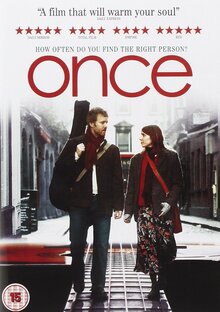 Volume XVI Last time we did movie recs, we covered some of the best children’s movies set in Ireland (check that out here!), but kids aren’t the only ones who can get the mid-winter blues. This time, we’re here with recommendations for our SRL parents (and some of our older dancers, at your discretion.) So tuck your littlest dancers in, make some hot cocoa, stop worrying about being possibly snowed in tomorrow morning, and dive into one of these beloved films that will whisk you away to Ireland and make you laugh, or cry…or both! 1. Once (2007, R) 97% Rotten Tomatoes 7.8 IMDb Rent on Amazon Prime Set in Dublin, Once follows an Irish vacuum repairman and hopeful musician (known only as “Guy”) and a Czech immigrant flower-seller (known only as “Girl”) in the journey of their burgeoning love and attempts to follow their shared dreams. This stripped-down musical (all about the music with none of the fanfare and dance numbers) begins when Girl reaches out to Guy to let him know that she’s also an aspiring singer-songwriter and a partnership is born. When that partnership deepens into something more, something beautiful happens—and we’re not just talking about the Oscar-winning original song “Falling Slowly.” But the movie is hardly a romantic comedy, as the course of true love never did run smooth, so get ready for something more soul aching and bittersweet than saccharine. Eventually adapted for the stage where it became a Broadway hit, Once is a simple story, but one that will charm the coldest heart this winter. 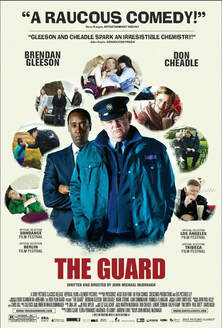 2. The Guard (2011, R) 94% Rotten Tomatoes 7.3 IMDb Rent on Amazon Prime The Guard is a kind of buddy cop/crime film, but just remember that Irish humor tends to skew a little dark. Beloved Irish actor Brendan Gleeson (we could spend a whole blog post listing his accolades, but let’s just mention that he was Professor Moody in Harry Potter) stars as Garda (that’s Irish for police) Officer Boyle who’s a little bit…much. Crass and eccentric Boyle is knee-deep in an investigation when he stumbles onto a much bigger crime ring, causing a straitlaced FBI agent (played by Don Cheadle) to get involved. Set in Connemara in western Ireland, the story follows the unorthodox pairing as they try to track down the criminals, with a healthy dose of both hilarity and tragedy in equal measure. The film was warmly received critically and at the box office (actually becoming the highest grossing independent Irish film to date,) with Gleeson even being nominated for a Golden Globe for his role. 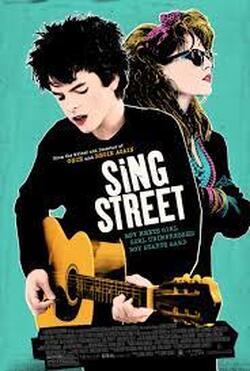 3. Sing Street (2016, PG-13) 95% Rotten Tomatoes 7.9 IMDb Watch on Amazon Prime When you consider Ireland’s long history of musicality, it’s not surprising that there’s two musicals on this list. Sing Street is set in 1980s south inner-city Dublin and based on writer and director John Carney’s experiences as a teenager (he even attended Synge Street CBS, the school the plot revolves around.) The film follows Conor Lawlor as he’s transferred to this new school due to issues at home and starts a band with his new friends in order to impress his crush. As you’d expect from any teenage tale, this venture is tumultuous, but ultimately gives way to a story of found family, the power of love, the restorative nature of creativity, and dreams of escaping your small town. While the adult actors are an all-star cast, Carney chose to cast all unknowns for the younger roles to keep the narrative as relatable as possible. Full of slightly fantastical elements paired with realistic 80s nostalgia, Sing Street has a levity to it, even as it tackles difficult issues (with a song or two thrown in!) 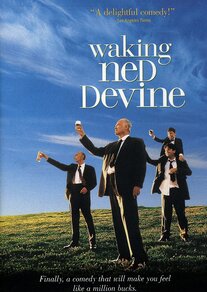 4. Waking Ned Devine (1998, PG) 84% Rotten Tomatoes 7.4 IMDb Rent on Amazon Prime Touted as an “Irish Weekend at Bernie’s,” Waking Ned Devine is a film that finds humor even in the darkest topics. Set in the tiny village of Tullymore (population: 52) where everyone knows everyone’s business, senior friends Jackie and Michael are gob smacked when they find out someone in town has won the lottery! A ham-fisted investigation of sorts ensues that reveals that local recluse, Ned Devine, is not only the winner—but promptly died of the shock. But Ned has no family and he’d want to share his winnings with the whole village…right? What follows is a romp of high-spirited hijinks perpetrated by the entire, mostly elderly population in order to trick the claims inspector—fully of the silly and macabre in equal measure. A film full of heart and community as much as jokes, Waking Ned Devine was considered a delight by most reviewers, an updated comedy of manners with a bit of bawdiness for fun. (Oh, and it was also nominated for and won a ton of awards!) 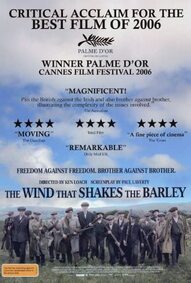 5. The Wind That Shakes the Barley (2006, Not Rated) 90% Rotten Tomatoes 7.5 IMDb Rent on Amazon Prime The highest grossing independently made Irish film in history before surpassed by The Guard and widely considered one of the most important Irish films of all time, The Wind That Shakes the Barley is the historical pick on this list. Set in County Cork during the Irish War for Independence (1919-1921) and the Irish Civil War (1922-1923,) the film follows brothers Damien (portrayed by Cillian Murphy of Peaky Blinders fame) and Teddy as they fight a guerrilla war against the British. This film tackles one of the most difficult times in Irish history through an interpersonal story that grounds it for the viewer, with nods to Ireland’s troubled history (the title comes from a Robert Dwyer Joyce song of the same name, set during the 1798 rebellion.) It may not be rated, but definitely expect some heavy topics and violence due to the subject matter, but not necessarily gratuitously so--it did win the coveted Palme D’Or at Cannes. Happy (or not so happy…) viewing! This post is part of a series. Read our last Modern Ireland post, all about University College Dublin, here. Check out the blog every Monday and Thursday for more posts about Irish history, dance culture, community news, and spotlights on our dancers, staff, and families—among other fun projects! And don’t forget to dance along with us on both Facebook and Instagram. Volume XVI University College Dublin Not to be confused with our last uni spotlight, Trinity College Dublin, or London’s University College London (the UK has some serious overlap in uni nomenclature,) we’re here tonight to talk about another one of Dublin’s esteemed schools: University College Dublin (or UCD.) UCD is Ireland’s largest university at over 33,000 students and has been in existence (though the name has changed multiple times over the years) since 1854. Divided into six colleges and 37 schools within the larger umbrella of the university, there’s almost no subject your dancer wouldn’t be able to study at UCD. Despite its size, the focus at UCD always remains on the academics—this research-intensive university (with research endowments in the multi-millions) is regularly ranked in 1% of schools, ranking 185th worldwide. With five Nobel laureates amongst its current alumni and staff and the highest percentage of graduate study in Ireland taking place there, it’s known for cutting-edge research across all academic fields, as well as its thriving arts and literature programs. UCD’s archives rank as some of the most extensive in all of Europe with its National Folklore collection that concentrates on Irish history, oral tradition, and folklore (and which was added to the UNESCO Memory of the World Register in 2017.) But it’s not just about the school itself at UCD, they help prepare their students for the real world, too. UCD ranks top in graduate employability, above all other Irish unis (as well as 78th in the world,) while a study in 2015 reported that UCD graduates contribute 1.5 billion to Ireland’s economy annually. It’s also considered Ireland’s top networking university, with over a quarter million current alumni out in the world, making an impact in wide-ranging areas from the arts and sciences to politics and industry. Known as Ireland’s “global university,” UCD has approximately 8,000 international students from over 138 countries. But it doesn’t stop its global reach at Ireland’s borders—UCD has global centers all over the world to help find and support their international students complete with high school outreach, partner institutions, and points of contact for parents (and students!) within home countries. UCD’s campus used to reside on St. Stephen’s Green in the heart of Dublin, but continued expansion and desires for more modern facilities for students and research purposes led to its exodus to Belfield—only 4 kilometers outside the city center. And it’s a good thing they did as UCD now has one of the largest urban campuses in Europe and some of the most updated and extensive student accommodations in Ireland. It also ranks as one of Ireland’s safest campuses, as beyond the relative safety of Dublin there’s 24-hour security. Student life is considered a happy one at UCD, with an activism-centered focus to match the school’s motto: Ad Astra; Cothrom na Féinne or “To the Stars; Justice and Equality.” Between their active Students’ Union and their multiple student newspapers (not to mention radio stations!), UCD students have gained worldwide attention multiple times over the years for their focus on social justice and human rights. But there’s fun to be had too—over 60 sports clubs (not to mention that the Leinster Rugby team’s headquarters reside on campus,) and an equal number of student societies. There’s a community feeling, despite the number of students, with touches like every new student being given a scarf with the school’s colors—St. Patrick’s blue, saffron, and navy—at their welcome ceremony that students also wear to their graduation.
With a uni this large, there’s almost too much to say! Tune back in next time for Ireland’s smallest undergraduate population: Maynooth University in County Kildare. This post is part of a series. Read our modern Ireland post, all about contemporary Irish poetry, here. Check out the blog every Monday and Thursday for more posts about Irish history, dance culture, community news, and spotlights on our dancers, staff, and families—among other fun projects! And don’t forget to dance along with us on both Facebook and Instagram. 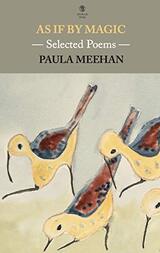 Volume XV Poetry Recommendations, Part 1 Poetry isn’t the most popular literary genre out there, sure, but there’s no denying that Ireland has produced some of the greatest poets of all time—perhaps the names Oscar Wilde, William Butler Yeats, or James Joyce sound familiar from your freshman lit class? But Ireland didn’t stop producing incredible poets in the 19th century! We’re here tonight on the blog to recommend some of Ireland’s greatest modern poets for your reading pleasure. 1. As If By Magic: Selected Poems, Paula Meehan One of Ireland’s premiere living poets, Meehan grew up in Dublin to a working-class family before traveling extensively throughout Europe. This expansiveness is reflected in her poems, which she’s been writing since a student at Trinity College Dublin in the 1970s, revolving around Dublin and its suburbs, but also look outward into the wider world. She’s a poet not quite of contradictions, but of intersections, looking into where nature and man, urban and suburban, man and woman, meet rather than divide. With poems ranging from the ecological and feminist to historical and personal, all are brought forth with her trademark passion and cutting wit that gives way to the utmost compassion and a desire to heal. This collection of poems spans 1991-2016 and includes some of her most courageous pieces—read more praise of Meehan’s Selected Poems here. Her accolades include being shortlisted for “A Poem for Ireland” in 2015 and being named the Ireland Professor of Poetry by Irish President Higgins in 2013. 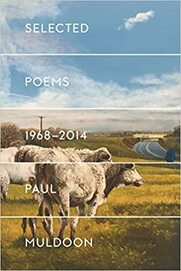 2. Selected Poems 1968-2014, Paul Muldoon In the poetry world, Paul Muldoon needs no introduction. With over thirty collections to his name and innumerable prizes (including a Guggenheim Fellowship and the 2003 Pulitzer Prize for Poetry,) he’s an Irish institution. Muldoon grew up in Northern Ireland where his parents worked as a farmer and a teacher, and published his first collection of poetry, Knowing My Place, at the ripe age of 19. Unlike many poets that came into prominence in the 60s and 70s, Muldoon is known for his use of traditional verse forms—though always with twist, innovating by creating a new space within the already existing structure of the poetic tradition. Muldoon’s work can be slippery, elusive, challenging the reader with his subtle humor and love of puns while exploring Irish history, literature, and politics. Though he currently resides in the U.S., Muldoon’s poems are quintessentially Irish at their core: examining the push and pull of identity—personal and communal—through the evocative magic of language. 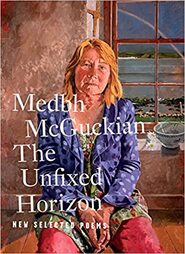 3. The Unfixed Horizon: New Selected Poems, Medbh McGuckian Another truly prolific writer with over 20 collections to her name, Medbh (pronounced Maeve) McGuckian was born in Belfast to a family steeped in academics and the arts. She attended Queen’s University for both her BA and MA, eventually returning to the campus as the school’s first ever female writer-in-residence (though early in her career she had to enter a contest under a male pseudonym in order to be considered—she won!) McGuckian’s work concentrates on domestic, internal landscapes, diving into a feminine space with expansive emotional reflection—work that leans heavily toward universal within the personal. In her own words: “I think the waking state is familiar and the dream state uncanny. Poetry is like a bridge between them.” Her awards include an Ireland Arts Council Award, the Rooney Prize for Irish Literature, and the Forward Poetry Prize, among many others. 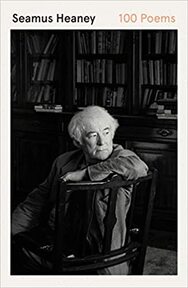 4. 100 Poems, Seamus Heaney A mentor to both Muldoon and McGuckian, Seamus Heaney may be Ireland’s most popular poet of the last 100 years, as well as one of the most revered poets of the last century worldwide. In fact, it’s extremely likely you read his poem, “Digging,” in high school or college (best known for its poetic depiction and veneration of manual labor.) While no longer with us, he was honored in 1995 with the Nobel Prize for Literature while teaching at Oxford, before moving on to teaching at Harvard until 2006. Heaney’s subject matter is what made him appeal to the masses and English teachers alike—most of his work delves into modern Northern Ireland’s landscape, making both the beauty of the land and the struggle of political upheaval feel intensely personal. Heaney is considered the voice of his country—both Northern Ireland and Ireland proper—to many to this day. Click this link to hear Heaney reading “Digging” shortly before his death in 2013. 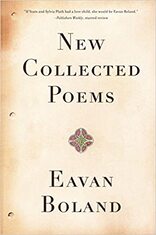 5. New Collected Poems, Eavan Boland The insanity of 2020 took many things away from us, and one of those wonderful things was the poet Eavan Boland. Boland was born in Dublin, but spent much of her childhood in London, where her father served as the Irish Ambassador to the United Kingdom. She returned to Dublin in 1962 to attend Trinity College Dublin and it was there she published her first collection of poetry as a first year student. It was the beginning of a long and illustrious career for which she received many accolades, including being inducted into the Academy of Arts and Sciences while a professor at Stanford University and the Lannan Literary Award for Poetry. Her work concentrated on the female experience in Ireland with an undeniable feminist slant, combining the magic of the Irish landscape and folklore with the real lived experience and oppression of women. She is beloved by the Irish people (and the poetry world) for her unwavering commitment to exposing the troubled place of Irish women in a turbulent history and culture. 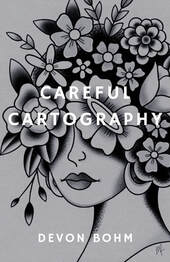 Bonus: Careful Cartography, Devon Bohm Only an Irish poet if you’re counting her heritage and the fact she’s currently employed by SRL Irish Dance Academy, Bohm’s first book of poetry was published in November of 2021 by Cornerstone Press out of the University of Wisconsin-Stevens Point as part of their Portage Poetry Series. We’ll let the press tell you more about the collection: “Careful Cartography, the striking debut collection from Devon Bohm, doubles as life writing and poetry. With her detailed geographic narrative, Bohm plots out her autobiography through both external and internal landscapes. Strong in style and voice, these impactful free verse poems create a map through wordscapes that equate to topographical locations, a search culminating in the most elusive and unmappable of locations: a home.” Careful Cartography is available for purchase on both Cornerstone Press’s website and Amazon, for your convenience! Happy Reading! This post is part of a series. Read our modern Ireland post, all about some of Ireland's premiere charities, here. Check out the blog every Monday and Thursday for more posts about Irish history, dance culture, community news, and spotlights on our dancers, staff, and families—among other fun projects! And don’t forget to dance along with us on both Facebook and Instagram. Volume XVII Part 2 Check out part 1 here! Last week, we brought you three Irish charities to donate to in lieu of a gift or two this year: Barretstown, a free camp for children with cancer and serious illnesses, Cuan Mhuire, a fully funded addiction rehabilitation program, and the Irish Wildlife Trust, a not-for-profit organization focused on environmental conservation. But we’re not done yet! We’re back at it with three more worthy causes (all based in Ireland) to fulfill your season of giving this year. (And if you’re still looking for gift suggestions for your dancer, never fear! Just check out the recommendations section of our blog—all the gift guides are there!) First off, let’s talk about The American Ireland Fund aka The Ireland Funds America. The American branch is based in Boston (with chapters all over the country,) and was originally called the American Irish Foundation when it was founded by none other than John F. Kennedy and Irish president Éamon de Valara in the 1960s. The Ireland Funds was originally a separate charity based solely in Ireland (founded in 1967) before the two merged in 1987 on Saint Patrick’s Day, complete with a function at the White House. But why merge? The goal of both organizations was and remains the same: a global, charitable network of “friends of Ireland” that promotes culture, arts, education, peace, and community across the Irish diaspora. The Fund has dispensed over $600 million to over 3,200 charities worldwide, but they remain focused on the goal of improving the world around them (and preserving Irish culture and helping those of Irish descent as they do.) With a “Give with Confidence” rating on Charity Navigator and an accountability rating of 100%, you know your money is going to a good cause! Next up, we have the Glencree Centre for Peace and Reconciliation. Established in 1974, right in the midst of the Troubles and in response to them, Glencree is devoted to peacebuilding, dialogue, communication, and education. They believe in nonviolent solutions between disparate communities with the goal of reconciliation and are a non-governmental organization with no specific political leanings beyond peace between all parties and pacifism. Based in Northern Ireland with offices in County Wicklow just outside of Dublin, they offer safe, neutral spaces for people of all ages to address issues of sectarianism and discrimination, which are still an issue in Ireland to this day. But they don’t just address Irish issues—their Sustainable Peace Project brings together participants in the wilderness of South Africa where they learn and discuss socio-economic inequalities stemming from the legacy of Apartheid. And Glencree is devoted to not only worldwide education, community-building, and open conversations in the hopes of non-adversarial solutions, but the use of arts and culture to bring people together and all heritages can be equally celebrated! And lastly, we wanted to talk about the oldest surviving charitable organization in Ireland: The Sick and Indigent Roomkeepers’ Society (the first clue to its age is definitely in the name.) Founded in—get ready—1790!, this organization was created by a group of men working in largely blue collar jobs (rather than the stereotypical upper class philanthropists,) bent on making a charitable organization that served the poorest of their city, regardless of religious affiliation. This group of grocers, carpenters, stonecutters, etc. each originally donated two pence a week for the honor or nominating a person or family in need. Today, the organization has expanded its reach from the territory between two of Dublin’s canals to the whole of the city, and tends to focus on those who need one-off assistance versus the ability to qualify for ongoing state assistance—so they’ve been particularly busy during the pandemic! As a private charity, they’re able to pick who receives their donations on a case by case basis—from helping families pay their bills while their child is in the hospital to buying an elderly couple a bed when they couldn’t afford one when theirs broke. It’s essentially a neighborhood charity for Dublin that looks at the smaller cases versus the bigger picture! (And now anyone can submit an application—for themselves, or others!)
No matter where you choose to donate this year—near home or abroad—we wish all our SRL families the happiest holiday season! This post is part of a series. Read our last Modern Ireland post, with three additional charitable giving options, here. Check out the blog every Monday and Thursday for more posts about Irish history, dance culture, community news, and spotlights on our dancers, staff, and families—among other fun projects! And don’t forget to dance along with us on both Facebook and Instagram Volume XVI Part 1 Last year, we posted pretty extensive gift guides for every kind of Irish dancer and Irish dancer gift we could think of: the littlest dancer, the competitive dancer, Irish dance décor, Irish dance apparel, a feis survival basket, Irish dance parental figures, and even stocking stuffers! All those suggestions are still up to peruse (just click on the category that strikes your fancy,) but we thought we’d go a different route this year. While material gifts are always going to be exciting, the events over the past almost two years (crazy!) have really brought to light what matters most: helping others as part of a global community. Inspired by all those hearts and thank yous all over for essential workers, we’re here to let you know about some of our favorite Irish charities to donate to in lieu of a present or two this holiday season. First up, we have Barretstown! This not-for-profit camp for children with cancer and other serious illnesses is located in County Kildare at the beautiful Barretstown Castle in Ballymore Eustace. It was founded in 1994 by Paul Newman (yes—that Paul Newman) and provides what they call “therapeutic recreation” for the campers aged 7-17 that helps enhance the children’s lives and rebuild self-confidence in the face of the struggles they’re facing. The camp is a member of the Serious Fun Group, a global children’s network dedicated the improving the quality of the lives of children who have been impacted by serious childhood illnesses. Their first camp was right here in Connecticut in 1988, but there are now 30 worldwide—including Barretstown in Ireland! The camp is completely free to campers, which means they need to raise €4.5 million a year to keep it running. Well, along with the 1,200 volunteers or “caras” (it means friend in Irish!) who donate their time to the campers! (And good news: as of this year, the Barretstown program is open to US-based children as well!) Next, we’d love to turn the spotlight on Cuan Mhuire. The name means “Mary’s Harbor” and it was founded in 1966 by a nun named Sr. Consilio and her order, the Sisters of Mercy, to help people struggling with alcohol, drug, and gambling addictions. Since that time, it’s charitably treated over 100,000 individuals in its locations throughout Ireland, with approximately 40% of patients experiencing homelessness at the time of their admission. Between the harmful stereotypes that still persist about Irish alcohol consumption to this day and the cultural norms that perpetuate addiction problems throughout Ireland, Cuan Mhuire is providing an invaluable public service and has been honored innumerable times over the years. This was the first purpose-built rehabilitation center in all of Ireland and focuses on uncovering underlying issues that led to addiction and treating the whole person, rather than the disease, through a variety of therapeutic techniques. With their primary philosophy being that all people are worthy and that there are no hopeless cases, we think it’s a worthy cause! Lastly, we’d love to take a moment to talk about the Irish Wildlife Trust! They’ve been around as both a lobbyist in Irish politics and a national conservation-based charitable organization since 1979. The IWT’s goal is multifold: to conserve wildlife and their habitats throughout Ireland, while also encouraging understanding and appreciation of the natural world and educating the populace on both the importance of this and how to pitch in. It would take a whole new blog post to list all the environmental impact groups they’re a part of—from Seas at Risk and the European Environmental Bureau to Bat Conservation Ireland and Badgerwatch Ireland—and they have branches all throughout the country (check out a list of their current campaigns here.) Between their work on national parks and the numerous studies and surveys they perform, IWT is on the front lines of environmental conservation that not only serves Ireland, but every tourist that visits to see the island’s natural splendor.
But these are only a few of Ireland’s many laudable charitable causes! Check in next week for a few more options, (or check out this (not comprehensive, but extensive) list--List of Charitable Organizations in Ireland—in the meantime.) This post is part of a series. Read our last Modern Ireland post, all about Trinity College Dublin, here. Check out the blog every Monday and Thursday for more posts about Irish history, dance culture, community news, and spotlights on our dancers, staff, and families—among other fun projects! And don’t forget to dance along with us on both Facebook and Instagram. Volume XV Trinity College Dublin We’re back with the university spotlight turned to another part of the country, from Limerick to…Dublin! Ireland’s largest city also happens to house its top-ranked university: Trinity College Dublin (it’s also, impressively, ranked 101st in the world—or 43rd according to another report!) Technically the second university founded in Ireland (The Medieval University of Dublin, established in 1320, only lasted 200 years or so,) it’s currently Ireland’s oldest surviving university! Founded by Queen Elizabeth I in 1592, it was intended to be Ireland’s version of Cambridge or Oxford and the connection remains today—its sister schools are still St. John’s College at Cambridge and Oriel’s College at Oxford. In fact, a graduate of Trinity College Dublin, Cambridge University, or Oxford University can be awarded a comparable degree at the other two without further examination. TCD’s libraries house 7 million volumes, including original manuscripts of historical significance like The Book of Kells (it’s been there since 1661 where it was placed for safekeeping from political upheaval.) It should be no surprise that the library is considered one of Europe’s most beautiful to this day, and remains the largest in Ireland. The school was only open to Protestant students until 1793, and admitted its first female student in 1904—though now its doors are open to any and all who apply. Well, that’s not strictly true—Trinity is a top school with strict academic standards to match. Admissions at TCD rely purely on a student’s academic merits, with no other considerations made. As we’ve discussed in previous posts about secondary education in Ireland, students are admitted to a specific course of study…and with 18,000 students enrolled in 23 schools and 400 courses in graduate, and post-graduate level study, there’s plenty of programs to apply to—all top of their field! However, the most competitive and well-regarded programs at Trinity are law, humanities, and literature. It’s no wonder that some of Ireland’s greatest literary minds have degrees from Trinity, including the likes of Jonathan Swift, Oscar Wilde, William Congreve, Samuel Beckett (a Nobel Laureate to boot,) and Sally Rooney—just to name a few (and we didn’t even get to the politicians!) When TCD was founded and originally built it was located slightly outside the city, but as time passed and Dublin grew, it grew around the university. Now, Trinity is the heart of the city and students have all the perks of city life coupled with the perks of student life! Trinity’s campus is built in such a way to make students feel that they have a tranquil space in the midst of the bustling city around them—with most buildings facing inward toward beautifully manicured quads. While the campus is 47 acres, the huge number of societies (120+) and sports clubs (50+) brings the student body together, as well as the many Trinity traditions (and their good-natured rivalry and “colour wars” with University College Dublin!) Trinity continues to follow the Oxbridge example with (at least) two other traditions: their formal dining for scholars (top students with special privileges) in Commons (with prayers in Latin and full wait staff) and the elaborate event for all students, but especially those graduating, known as the Trinity Ball (click the link to learn more, but it’s Europe’s biggest private party with approximately 7,000 attendees!) Ranked 17th in the world for international students, Trinity has students and staff from over 120 countries (with 28% of students from outside of Ireland!) Worried about visas? TCD makes sure to give graduating undergraduates the option to remain in Ireland for 1-2 years of postgraduate studies or work experience within Ireland, which they help arrange. If this leads to full time employment, the US-Ireland Working Holiday agreement helps US students on their way to a more secure work permit! For a US-based student, Trinity is an excellent pathway to making Ireland, the UK, or Europe as more permeant home (sorry, parents! Just reporting the facts.)
A school with a 400-year history is pretty difficult to sum up in a blog post, but the long and short of Trinity College Dublin is this: if you want to study it, Trinity is a pretty wonderful place to do so. Definitely meant for the most academically ambitious students across the globe, TCD balances collegiate tradition with cutting edge scholarship, but doesn’t skimp on the regular college experiences. But we’ve only covered two of Ireland’s seven universities…keep an eye on the blog for more, coming soon! This post is part of a series. Read our last Modern Ireland post, full of middle grade book recommendations, here. Check out the blog every Monday and Thursday for more posts about Irish history, dance culture, community news, and spotlights on our dancers, staff, and families—among other fun projects! And don’t forget to dance along with us on both Facebook and Instagram. Yuletide Edition! Read our last ten fun facts here. 1. Before the island was anglicized and adapted to having a sweet Christmas pudding (meaning cake) on December 25th, the traditional Irish Christmas cake was a “seed cake.” It’s exactly what it sounds like—a not particularly sweet cake filled with seeds and spices we’d generally consider savory, like carraway and poppy. 2. If you head into the Irish countryside around Yuletide, you’re likely to see a few whitewashed buildings. Traditionally, families would clean and whitewash every building on their property come December. This wasn’t only in order to clean up for visiting relatives, but symbolic of purification before the Christmas celebrations. (This one is a tradition in many cultures in Central Europe, too!) 3. December 8th is considered the beginning of the holiday season in Ireland. While in America, we’ve started putting up Christmas decorations the day after Halloween (that’s capitalism for you,) Ireland’s Christian roots start the Yule season on the feast day of Immaculate Conception. In times past, this was the day the hordes would flock to Dublin to do their Christmas shopping—and now it’s the day the decorations go up! (Schools are generally closed that day, too!) 4. While people all over the world are dreaming of a white Christmas, you’re not too likely to get one in Ireland! It barely ever snows anywhere on the island. and though we tend to think of Ireland as cold and wet, it is an island—meaning its temperate climate stops it from getting too hot or too cold. The average temperatures range from 48 to 39 degrees Fahrenheit in December! (It’s already colder here!) 5. One of Ireland’s most…surprising Yuletide traditions actually occurs the day after. Known as Saint Stephen’s Day in Ireland, it’s like a rowdier second Christmas celebration that’s celebrated with horse races and Wren Boys—men dressed in over-the-top homemade costumes who sing and play music through the streets as they “hunt the wren” (i.e. carry around the effigy of a wren in a holly bush on the top of a pole.) This tradition stems from an old Irish tale where a wren, known for its loud song, betrayed a group of loyal Irish to the British. 6. January 6th is known as the end of the Christmas season in a lot of places, but Ireland has their own special twist on “Little Christmas.” The Irish call the day Nollaig na mBan or “Women’s Christmas.” Traditionally, most women were hard at work through the holidays, and the 6th was the day they were supposed to take a rest while their husbands took down all the holiday decorations (it’s considered bad luck to do it before or after!! We hope things are more equal now, but it still sounds like a nice break to us! 7. While it’s fallen out of favor in lieu of milk and cookies, it used to be popular to leave out a Guinness and a mince pie for Santa! (After all, Guinness is a very sustaining beverage.) 8. It’s believed that the Christmas carol with the longest history originated in Ireland. The Irish (and others) have been singing “The Wexford Carol” since the 12th century, leading it to be named the longest sung carol in the world. It’s based around the nativity and is also known as “Enniscorthy Carol” as it originated in, you guessed it, Enniscorthy in County Wexford. Want to hear it? Click here! 9. The Mourne Mountains in County Down is Santa’s (or as the Irish often say, Santy’s) official Irish residence! These mountains are very secluded, perfect for Santa to take a rest and help out his elves with the rest of the toys before Christmas is here, along with Rudolph and the rest of his reindeer. Want a tour? Check out this video.
10. Ireland has a lot of Yuletide traditions, but perhaps none so frosty as the Christmas Day Swim at Forty Foot in South Dublin! Christmas morning, hundreds gather to leap from Forty Foot Rock into the Irish Sea in nothing but their bathing suits (which is about 50 degrees Fahrenheit usually—the real problem is getting out,) often using the opportunity to raise money for charity. This post is part of a series. Read our last batch of fun facts here. Check out the blog every Monday and Thursday for more posts about Irish history, dance culture, community news, and spotlights on our dancers, staff, and families—among other fun projects! And don’t forget to dance along with us on both Facebook and Instagram. 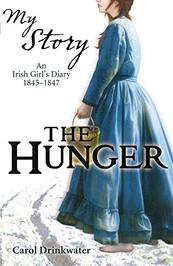 Volume XIV Middle Grade, Part 2 Check our Part 1 here! We’re back with more recommendations for the middle readers in your life, meaning kids around 8 to 12. (Though every reader differs and we’ll always advocate for adults reading all possible levels.) From nonfiction to fantastical, from the 1800s to modern day, these picks are sure to keep your middle grade reader busy over Thanksgiving Break. They might even learn a thing or two about Ireland while they’re at it. (Or just delve into a new fantasy world—anything to get them reading!) 1. The Hunger, Carol Drinkwater Subtitled “My Story: An Irish Girl’s Diary 1845-47,” The Hunger is told through the voice of Phyllis McCormack, a 14-year-old Irish girl living through The Great Famine. The narrative follows Phyllis as her family struggles to not just keep food on the table, but survive the potato blight entirely. With her radical brother off to fight for an Irish free state and the rights of the Irish people, Phyllis goes out to work as a maid to help feed her parents and beloved dog (even as her brother’s actions cause Phyllis’s family to be watched and questioned by authorities.) Drinkwater doesn’t spare the reader from the horrors of true poverty, loss, and needing to grow up too fast, but she does balance it by emphasizing Phyllis’s resilience, big heart, and helpings of both familial and romantic love. A tragic story, but a beautiful one. 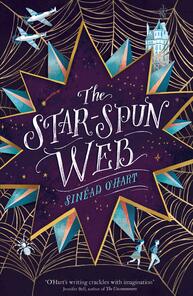 2. The Star-Spun Web, Sinéad O’Hart Calling all fantasy lovers! Described by one reviewer as “His Dark Materials for children” (though we’d argue that those books are for both middle readers and adults!), The Star Spun Web follows orphaned, science-loving Tess de Sousa and her pet tarantula Violet on an amazing adventure. When a previously unknown, distant relative arrives at Ackerbee’s Home for Lost and Foundlings to take Tess to her new home at Roedeer Lodge, Tess’s life is turned upside down. The mysterious Norton F. Cleat seems to know more about Tess’s life before the orphanage than Tess does—including what to do with the star-shaped device Tess had with her when she was abandoned as an infant. Small spoiler alert: the Starspinner can open a door into a parallel world that’s in big trouble, and it may be up to Tess to help. Want to know more? Read an interview about the book with the author here! 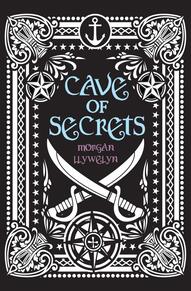 3. Cave of Secrets, Morgan Llywelyn Llywelyn’s tale of pirates in 17th century Ireland follows a thirteen-year-old boy named Tom Flynn as it balances an engaging narrative with historical detail. Feeling unwanted by his family as his father goes off to Dublin to try to keep his land and money safe in the shifting political climate, Tom likes to escape to the beautiful Roaringwater Bay in West Cork to hide among the cliffs and caves. There, he meets Donal and his little sister Maura, whose family keeps to the traditional Irish way of life despite all the English laws in place forbidding it–making their living under the radar of authorities by smuggling. Donal opens Tom’s eyes to the realities of English-Irish relations (Tom and Donal are even based off real people!) as Llywelyn weaves a story of buried treasure, family, and forgiveness. 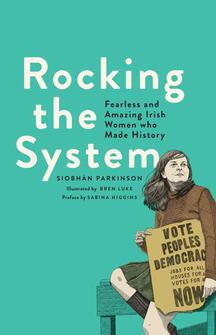 4. Rocking the System, Siobhán Parkinson Subtitled “Fearless and Amazing Irish Women Who Made History,” this is our only fully non-fiction pick this week. Geared to appeal to readers from 9-12, Rocking the System contains 20 beautifully illustrated essays about both historical and contemporary Irish women who defied the odds. There’s the story of strong-willed and legendary Queen Meadhbh who ruled Ireland for 60 years during the Ulster cycle of Irish mythology, of architect and furniture designer Eileen Grey who pioneered Modernism in male-dominated fields, of politician and suffragette Constance Markievicz who was the first female cabinet member in all of Europe, and of track and field groundbreaker and record-breaker Sonia O’Sullivan, among many more. This book was published to celebrate 100 years of women’s suffrage in Ireland and covers everyone from artists and writers to activists and stateswomen—rebels all! 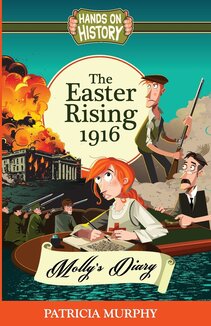 5. The Easter Rising 1916: Molly’s Diary, Patricia Murphy We’ve got a second recommendation tonight that’s told as a diary of a young girl living through a historic time period (Just like…anyone else remember the Dear America books from the ‘90s? They were a favorite!) Molly’s Diary covers the events of the Easter Rising of 1916—when many Irish nationalist refused to fight on behalf of the British in WWI and instead rebel against the crown. Molly’s family is caught squarely in the crossfire: while Molly’s father works for the government repairing telegraph lines in dangerous Dublin, her brother runs messages for the rebel forces, and Molly aids both sides by training in first aid. Molly’s there to witness it all and tell your middle reader what it was like in an easy, accessible style—from looting and rioting to heroism and idealism, from the Proclamation at the GPO and the Battle of Mount Street Bridge to the arrival of British forces. Murphy (and Molly!) really help history come alive. Happy Reading! This post is part of a series. Check out our last Modern Ireland post, all about the University of Limerick, here. Check out the blog every Monday and Thursday for more posts about Irish history, dance culture, community news, and spotlights on our dancers, staff, and families—among other fun projects! And don’t forget to dance along with us on both Facebook and Instagram. Volume XIII Part 1: University of Limerick Welcome to our new series, Uni Spotlight, where give you a quick rundown of Ireland’s top universities! We know our dancers love Irish culture, so we thought we’d give them (and their parents!) a look into some of the secondary education options they offer on the Emerald Isle. While no parent is going to be overjoyed about the prospect of their child heading to uni (it’s never “college” in Ireland!) in a foreign country, we’ve covered some of the benefits of the Irish university system before if you’re interested! 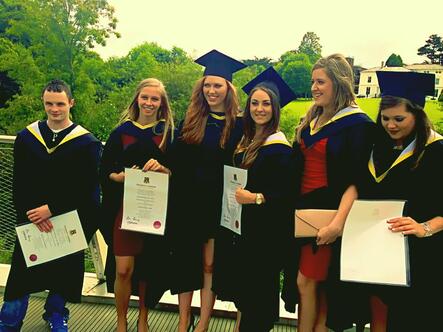 Miss Courtney on The Living Bridge--which you can see in the above photo! Miss Courtney on The Living Bridge--which you can see in the above photo! First up we have Miss Country’s alma mater (and where SRL gets the L in its name): the University of Limerick! Situated overlooking the longest river in Ireland, the River Shannon in the south of Ireland, the University of Limerick (aka UL) was founded in 1972 and gained university status in 1989—the first university to be granted it since the Republic of Ireland was established in 1922. With just over 15,000 students (around 2,400 of those international!), this 340 acre suburban campus is known for its international focus and dedication to both the arts and sciences. UL’s motto is Eagna chun Gnímh, which is “Wisdom for action,” a completely fitting name for a school with an outstanding Cooperative Education program. This program is one of the largest in Europe, and has led to graduate employment rates far higher than the national average. Cooperative Education (we might call in an internship program) concentrates on making sure students graduate with not only academic accomplishments, but professional experience by setting up over 2,000 students a year with 6-to-8 month work study placements. Around 30% of students are placed with international companies and the program encompasses 56 different courses of study! The wisdom for action continues with UL’s research-heavy science programs—highly specialized disciplines that aim to work together to achieve breakthroughs that can only be accomplished through interdisciplinary cooperation. But UL knows that wisdom doesn’t only lie in the sciences—it has well-developed art programs as well, including housing the Irish World Academy of Music and Dance, the Irish Chamber Orchestra, and an extensive fine arts collection. The word “dance” may have caught your attention there, and it should! UL offers the only degrees specifically in Irish dance and music in the world (both a BA and MA.) (As you may have guessed, Miss Courtney graduated from this four-year bachelor’s program before she returned home to Connecticut to open SRL!) Miss Courtney probably felt right at home studying at UL, since it’s considered the “American University in Ireland” due to their adoption of a few American practices. UL is on a trimester schedule that mirrors most American colleges, and also uses the same scaled GPA system we’re used to. In addition, like many large schools in the good ol’ U.S.A., UL is known for its superior sporting facilities (though their football looks a little different.) They actually have the largest all-weather sports complex in all of Europe!
But what about student life? While there’s five student villages, there’s not a dearth of on-campus housing. Instead, the Limerick suburb of Castletroy has become what we would call in America a “college town,” with most students finding a home there (making the majority of their population during the school year UL students!) Overall, life at UL seems to be a happy one—it’s considered the most popular uni in Ireland with an 85% student approval rating. With over 70 clubs and societies, a buddy program for international students, and an extremely active student union that emphasizes community, UL is known for having an enthusiastic student body. And it doesn’t hurt that while the campus boasts beautiful, bucolic views, the 3rd largest city in Ireland is only minutes away! But, that’s only one of Ireland’s incredible schools! Tune back in next time to take a look at Ireland’s top-ranked school academically: Trinity College Dublin. This post is part of a series. Read our last Modern Ireland post, all beloved Irish snacks, here. Check out the blog every Monday and Thursday for more posts about Irish history, dance culture, community news, and spotlights on our dancers, staff, and families—among other fun projects! And don’t forget to dance along with us on both Facebook and Instagram |
SRL NewsFind all of our latest news on our Scoil Rince Luimni Facebook page! Categories
All
Archives
August 2022
|
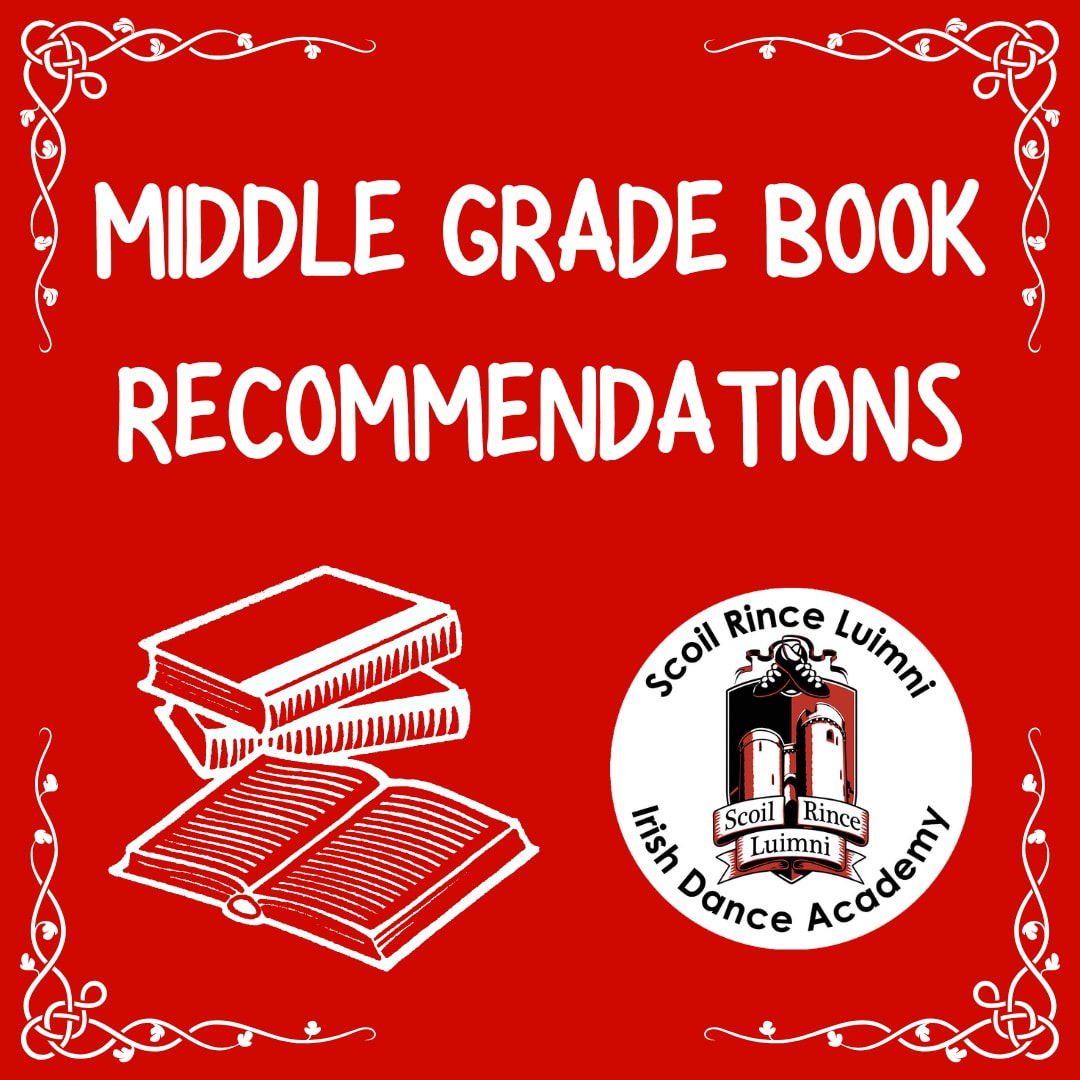
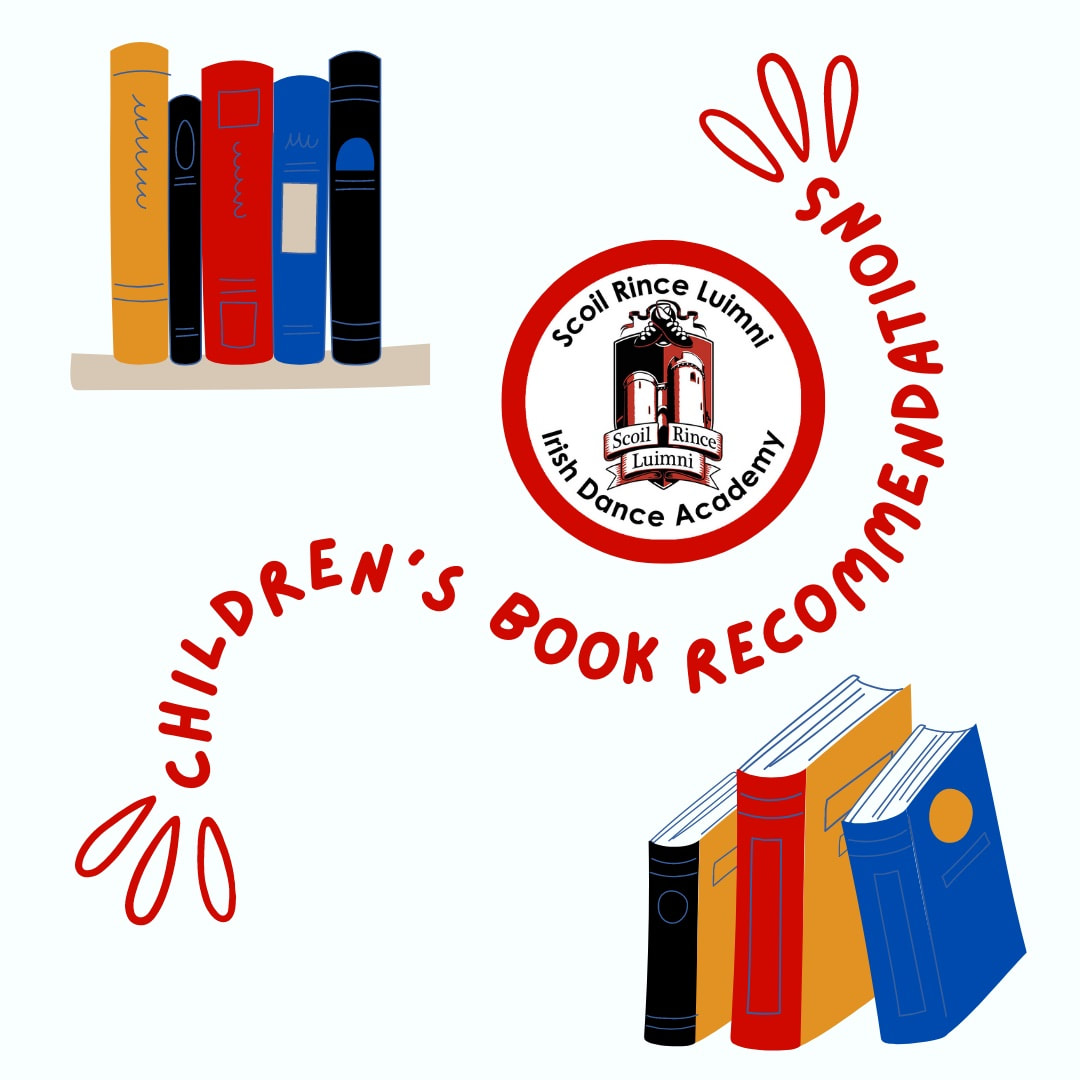
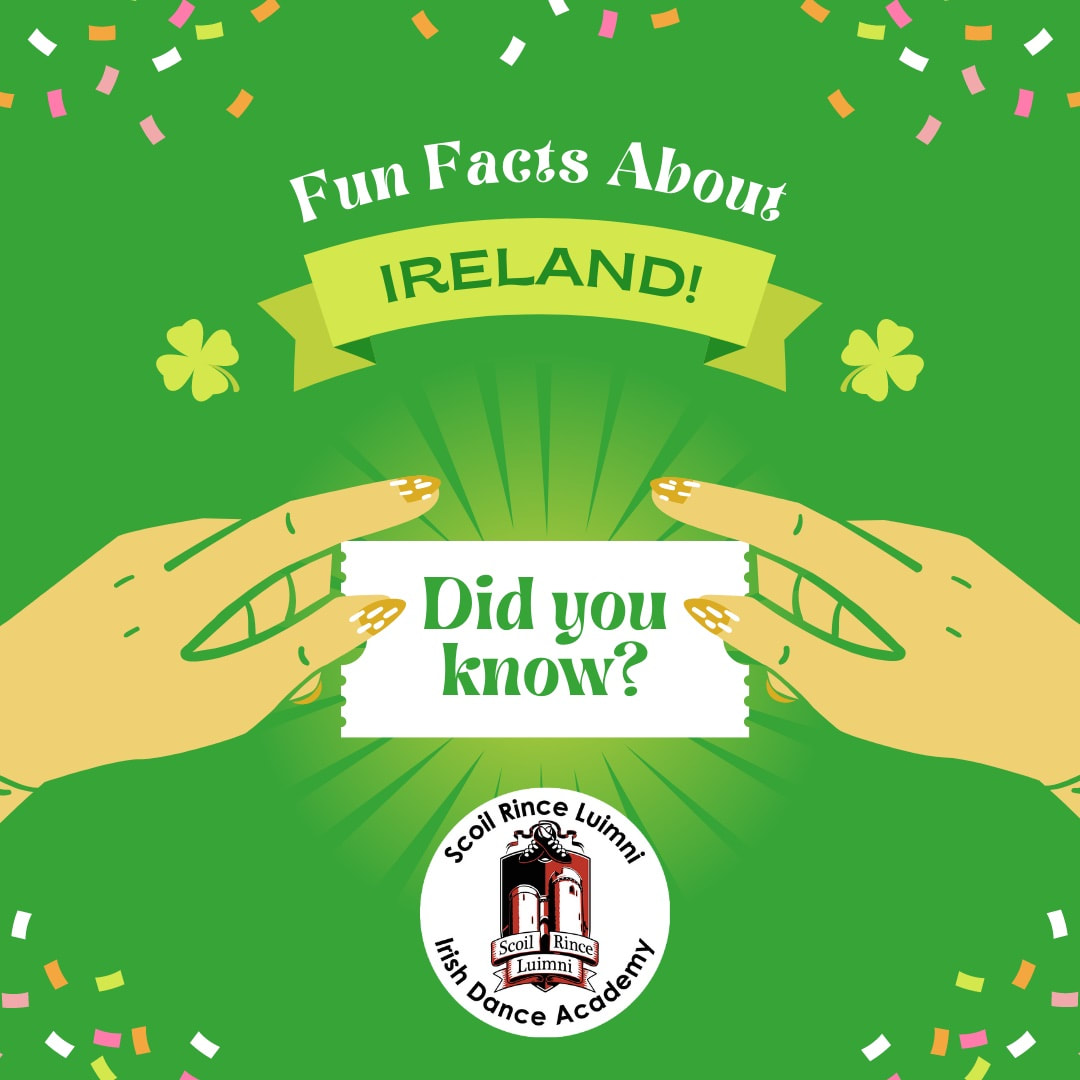
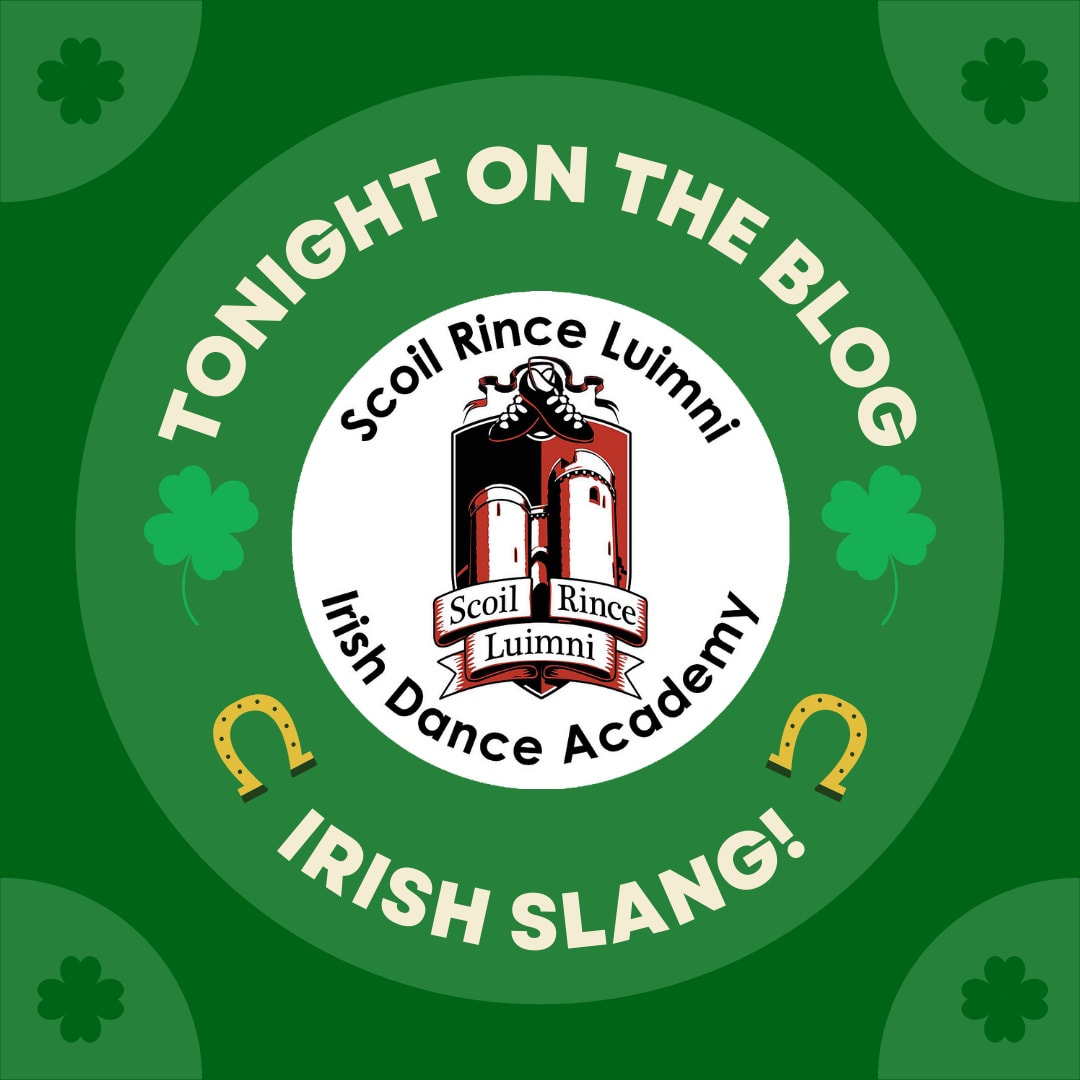
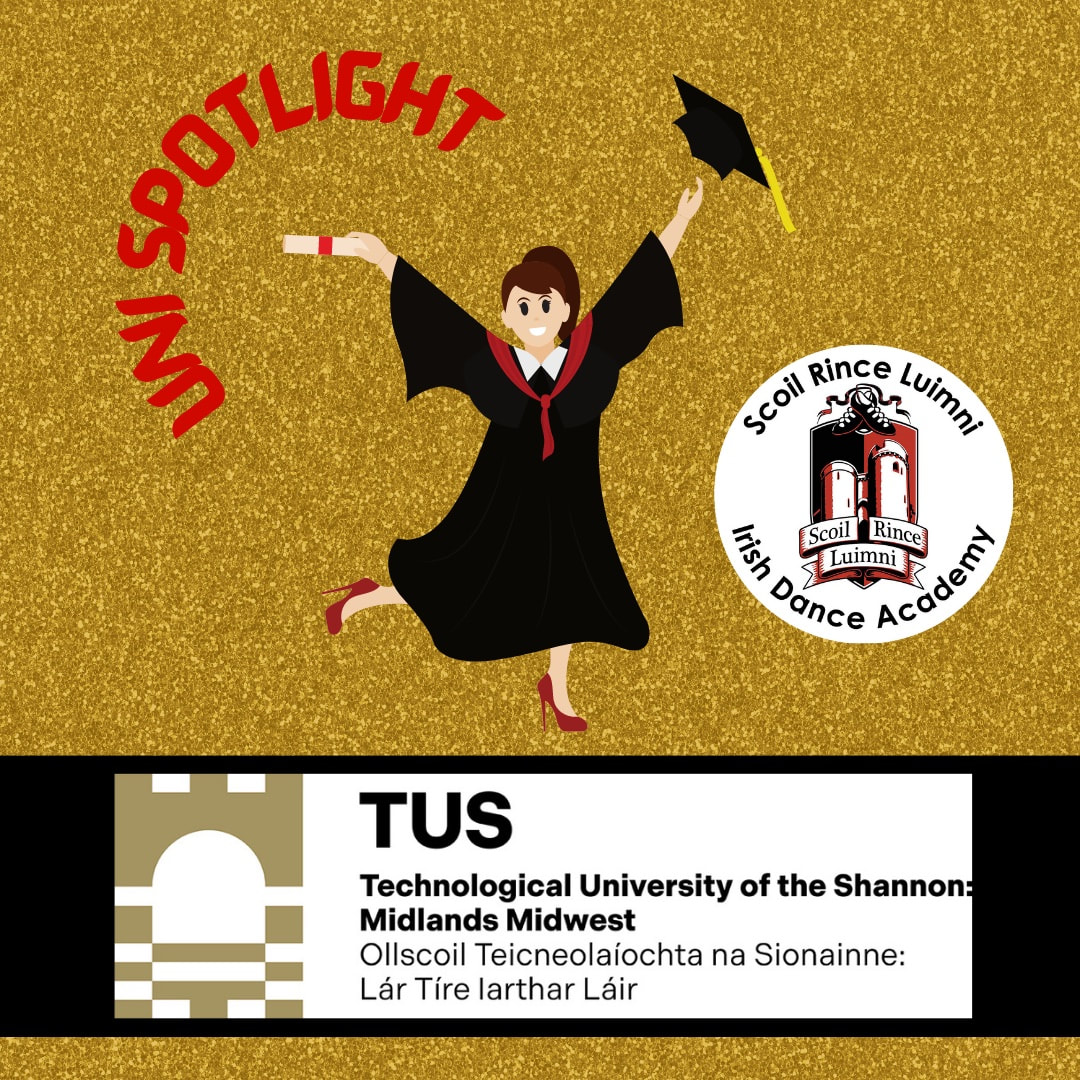

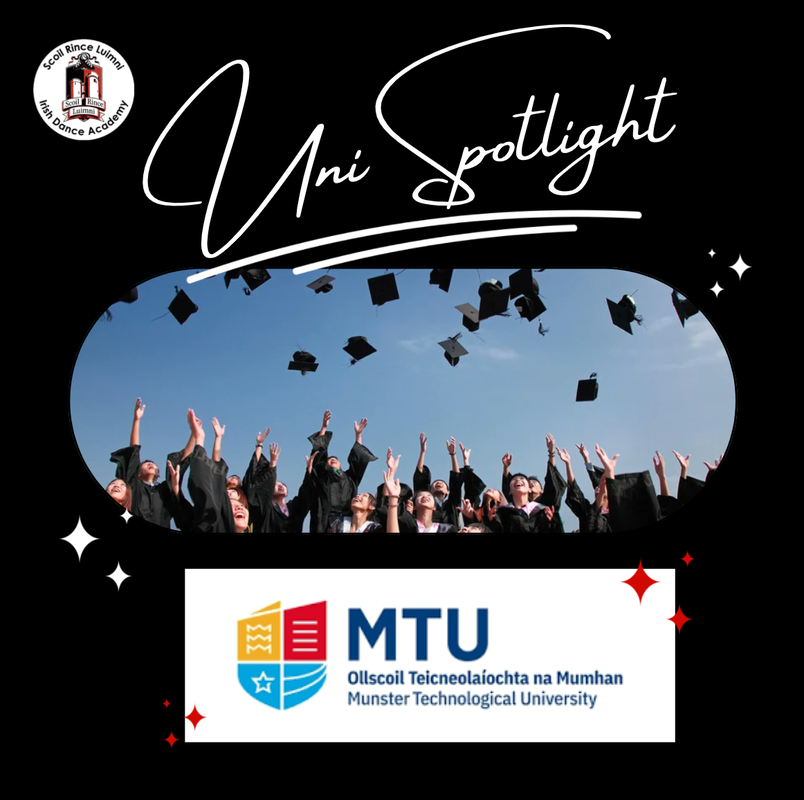

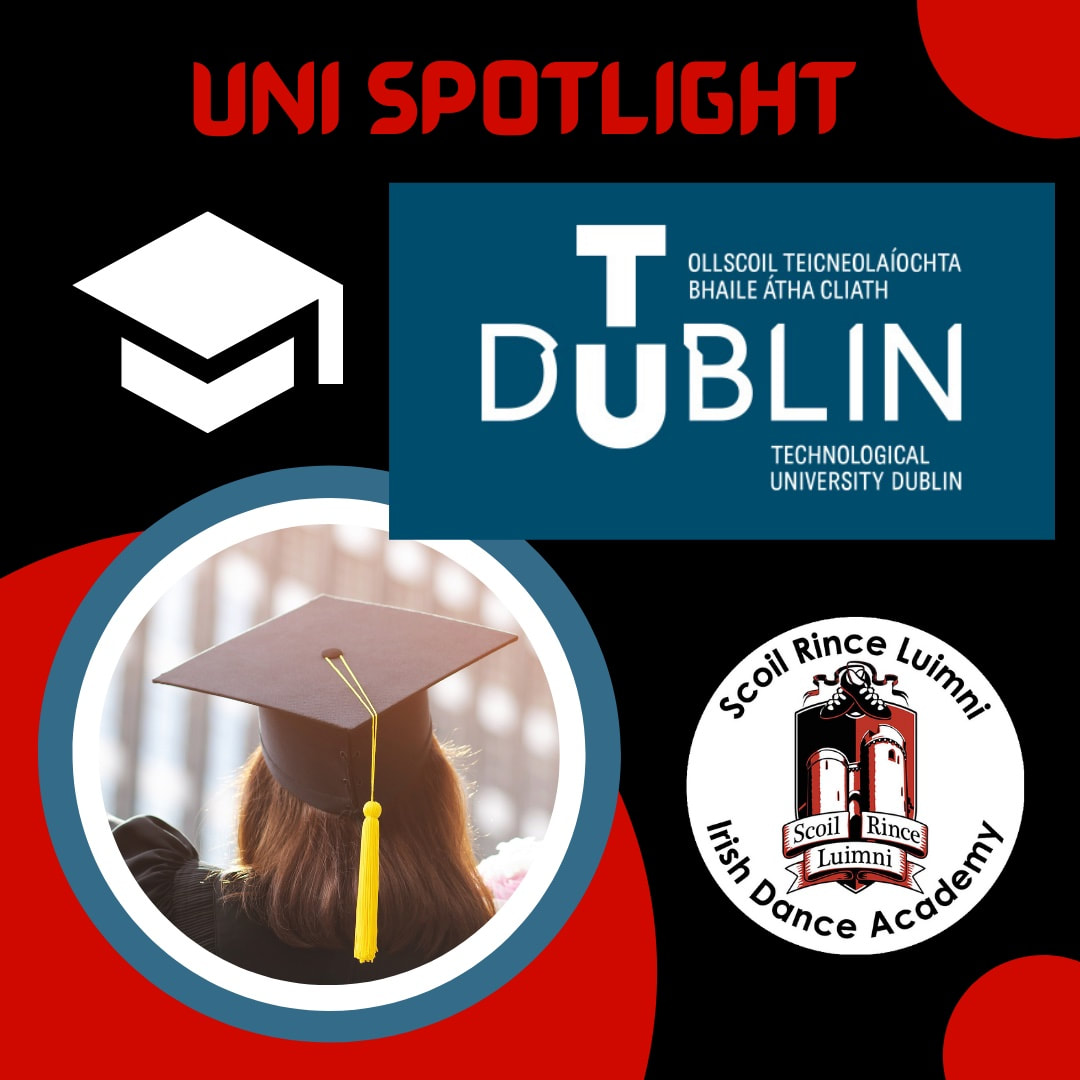
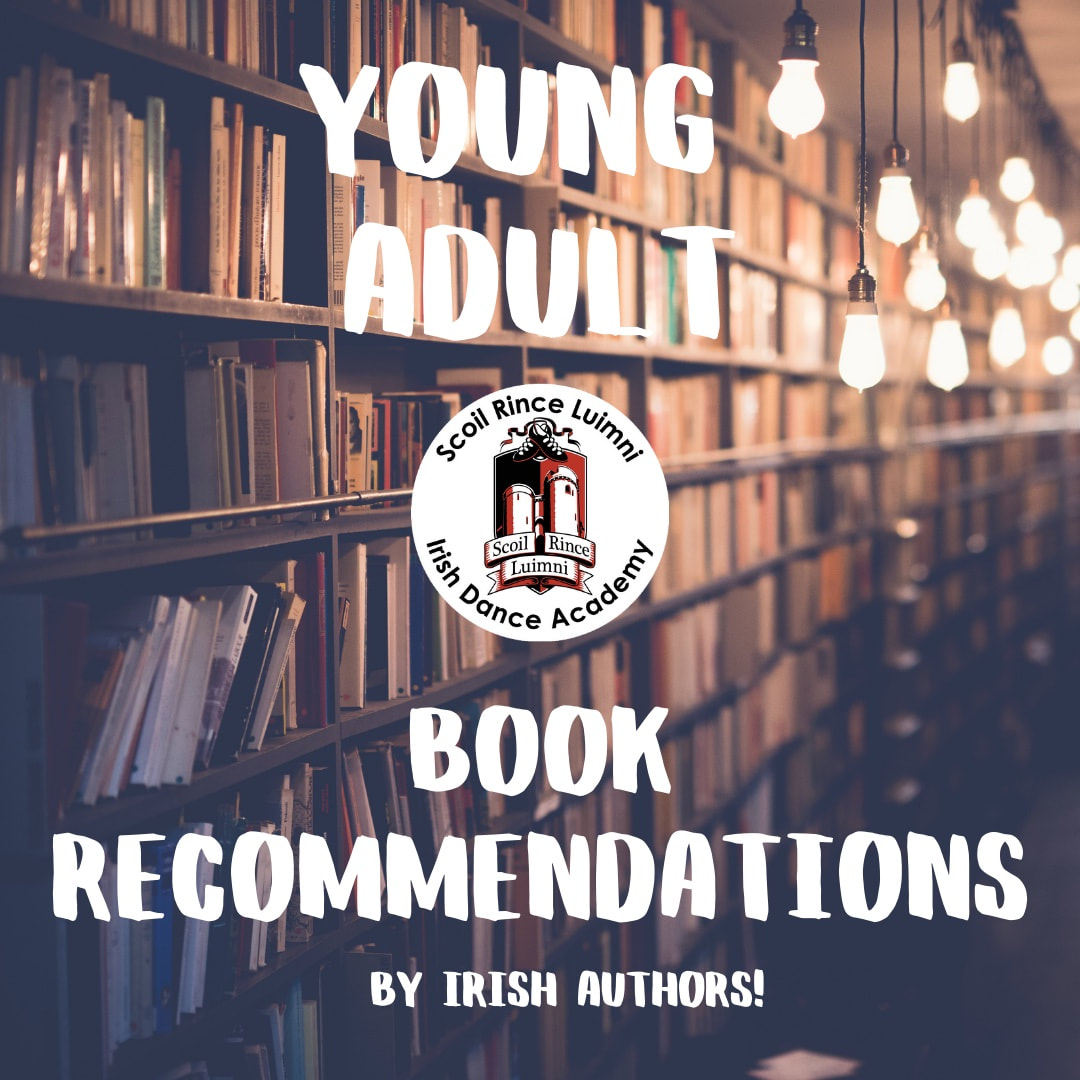
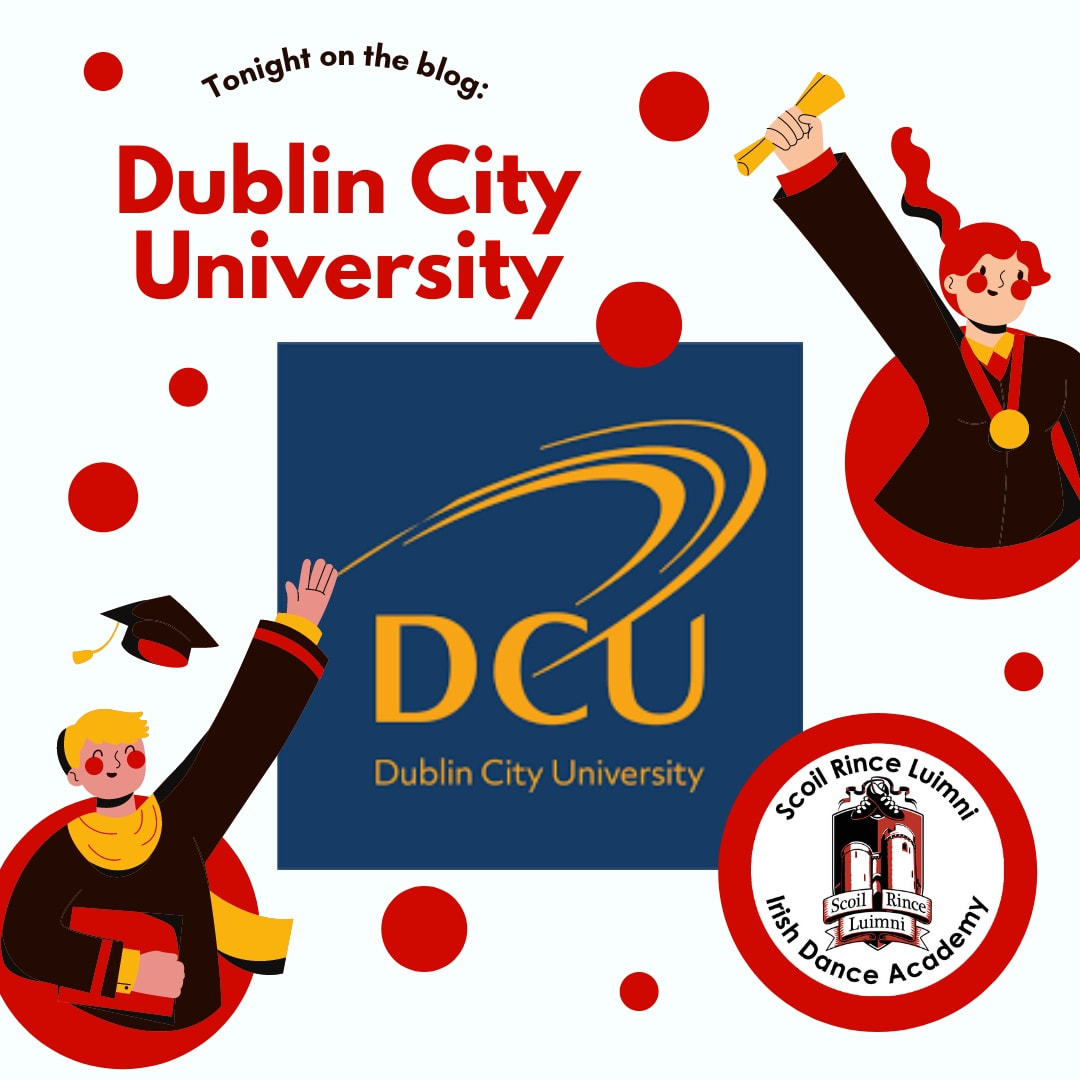
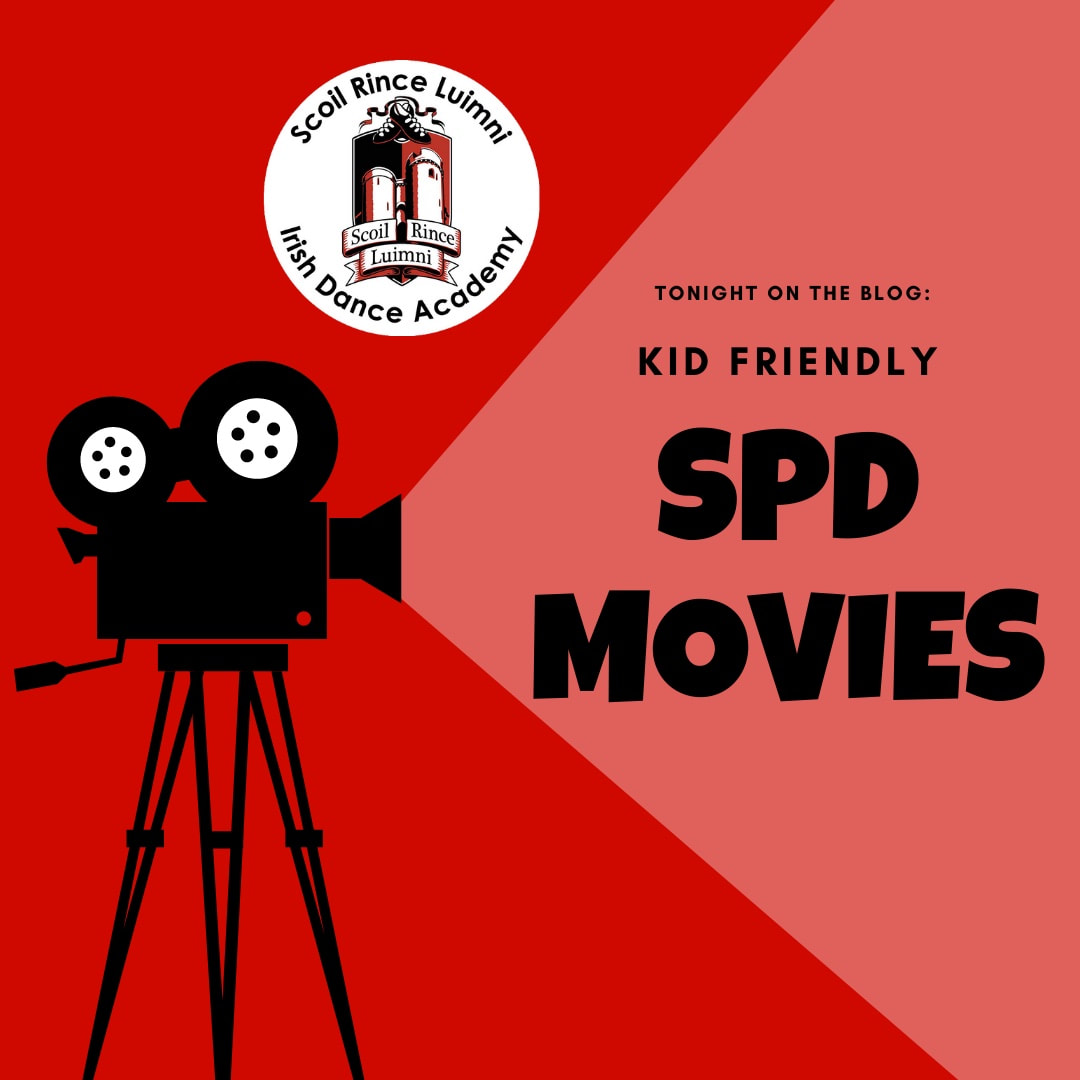
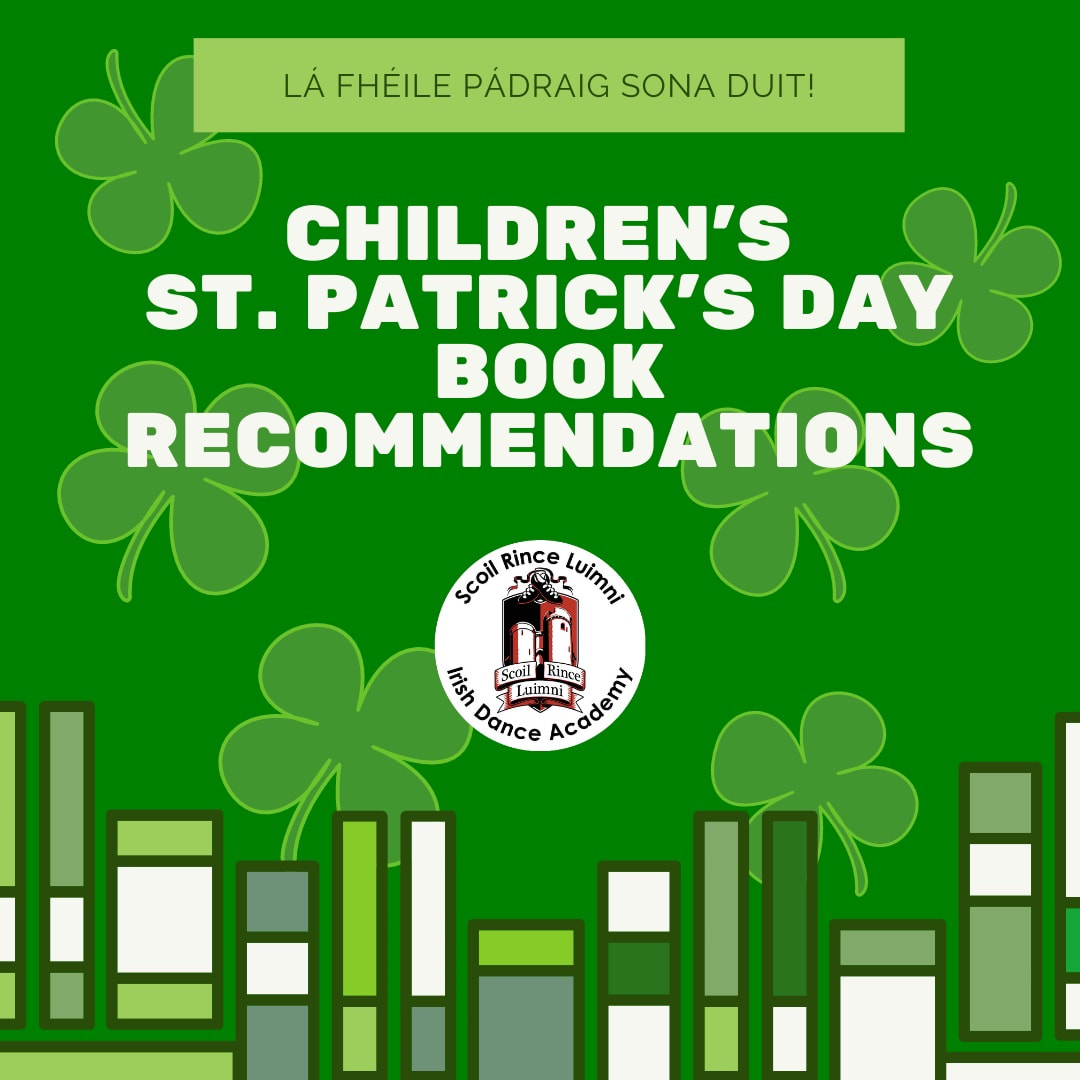

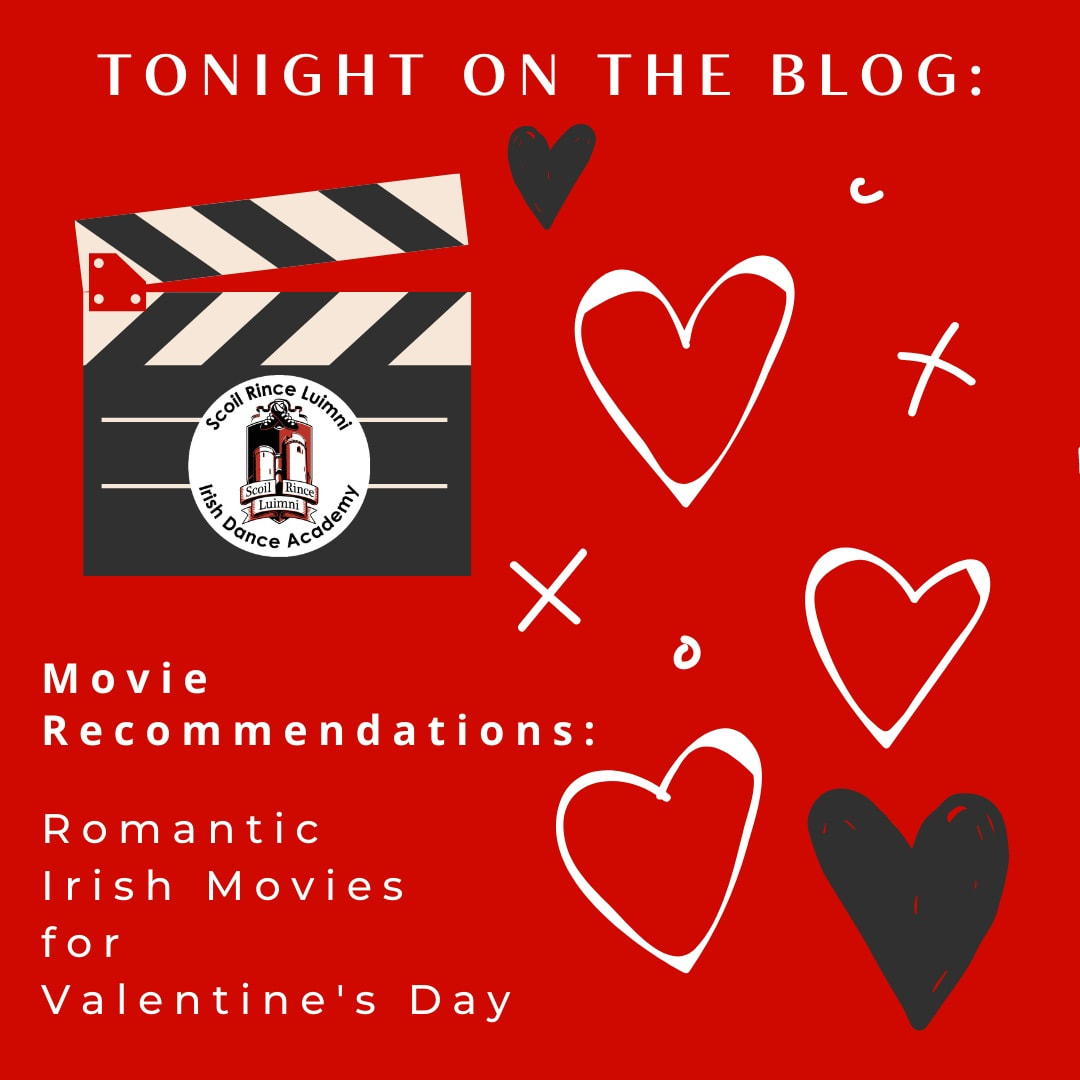
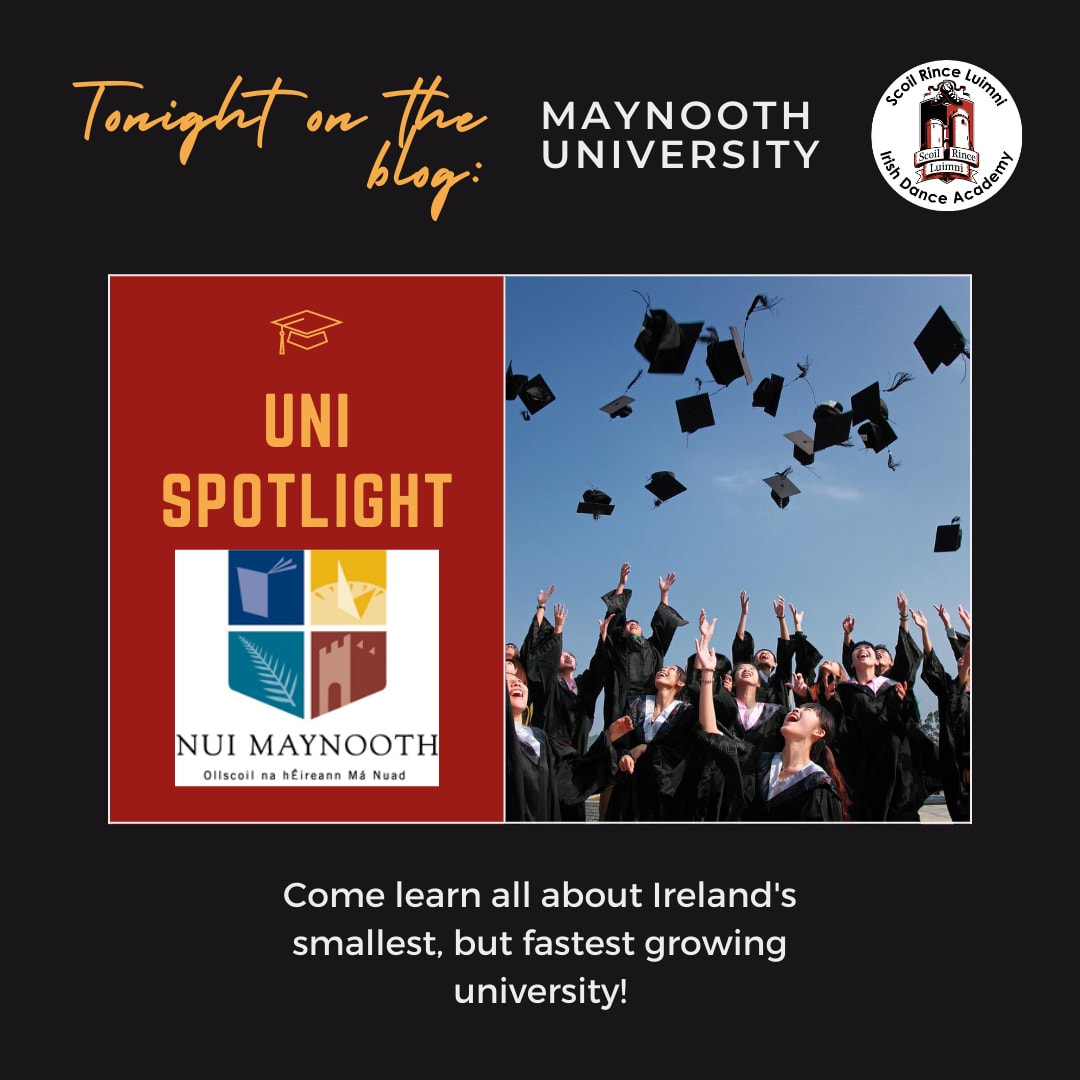

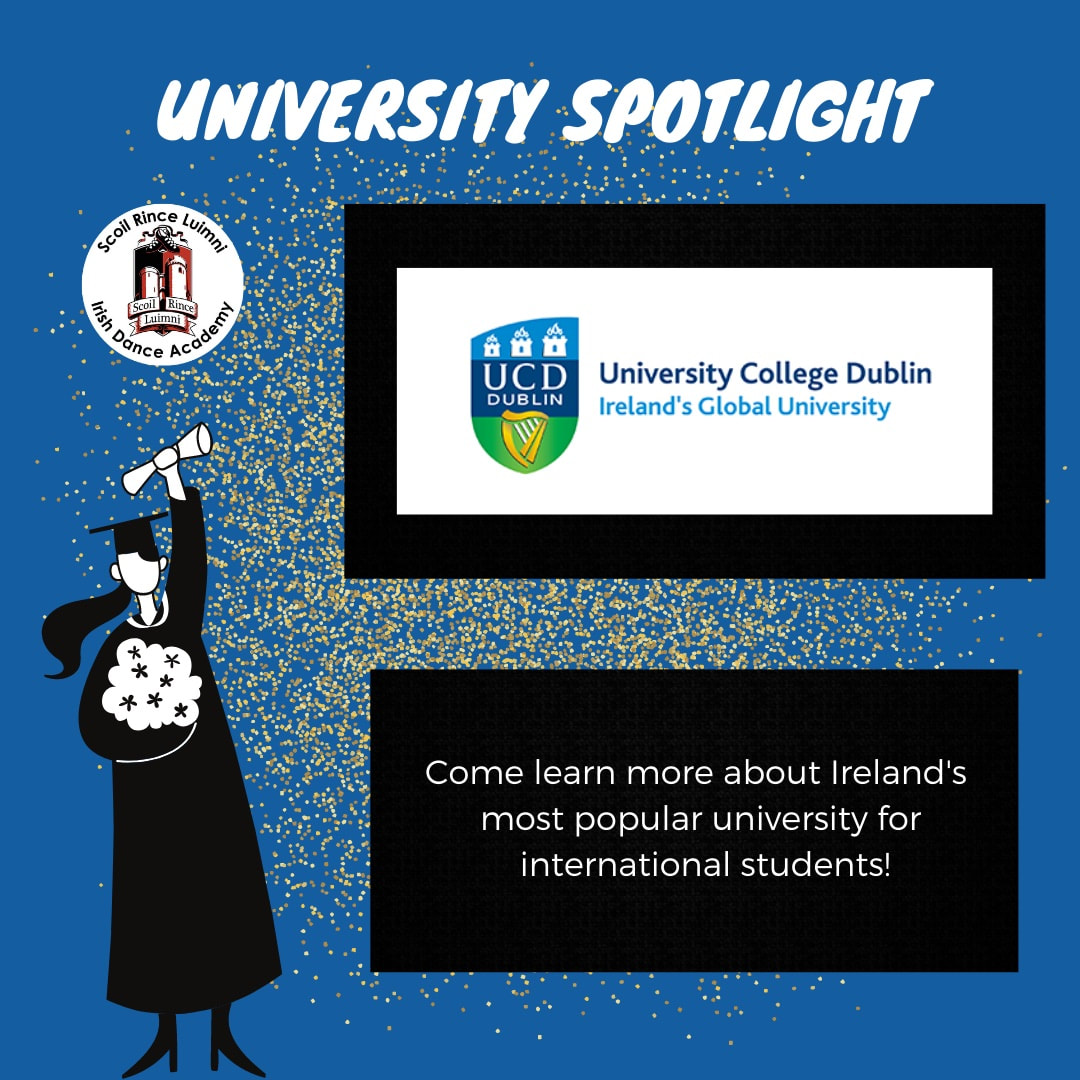
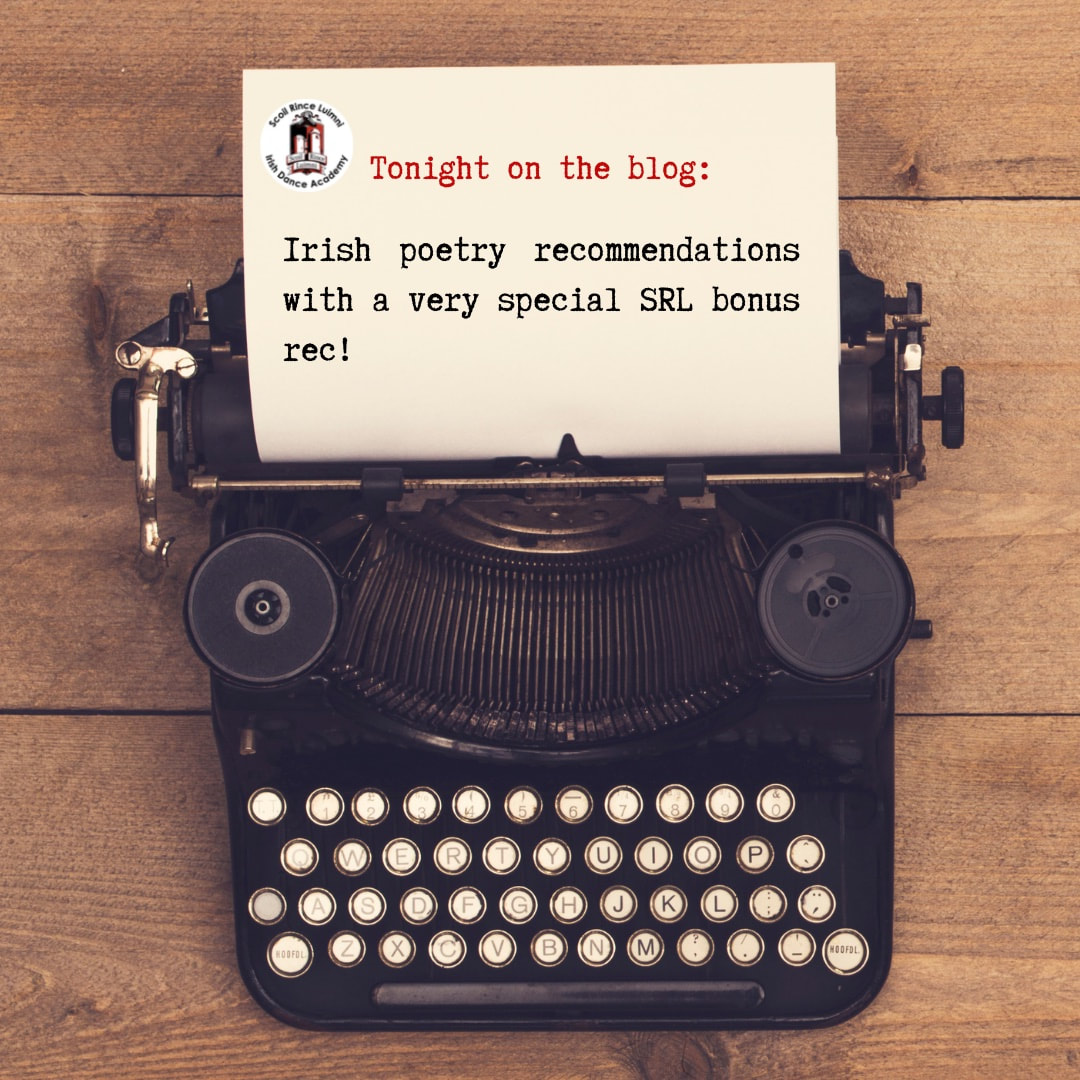
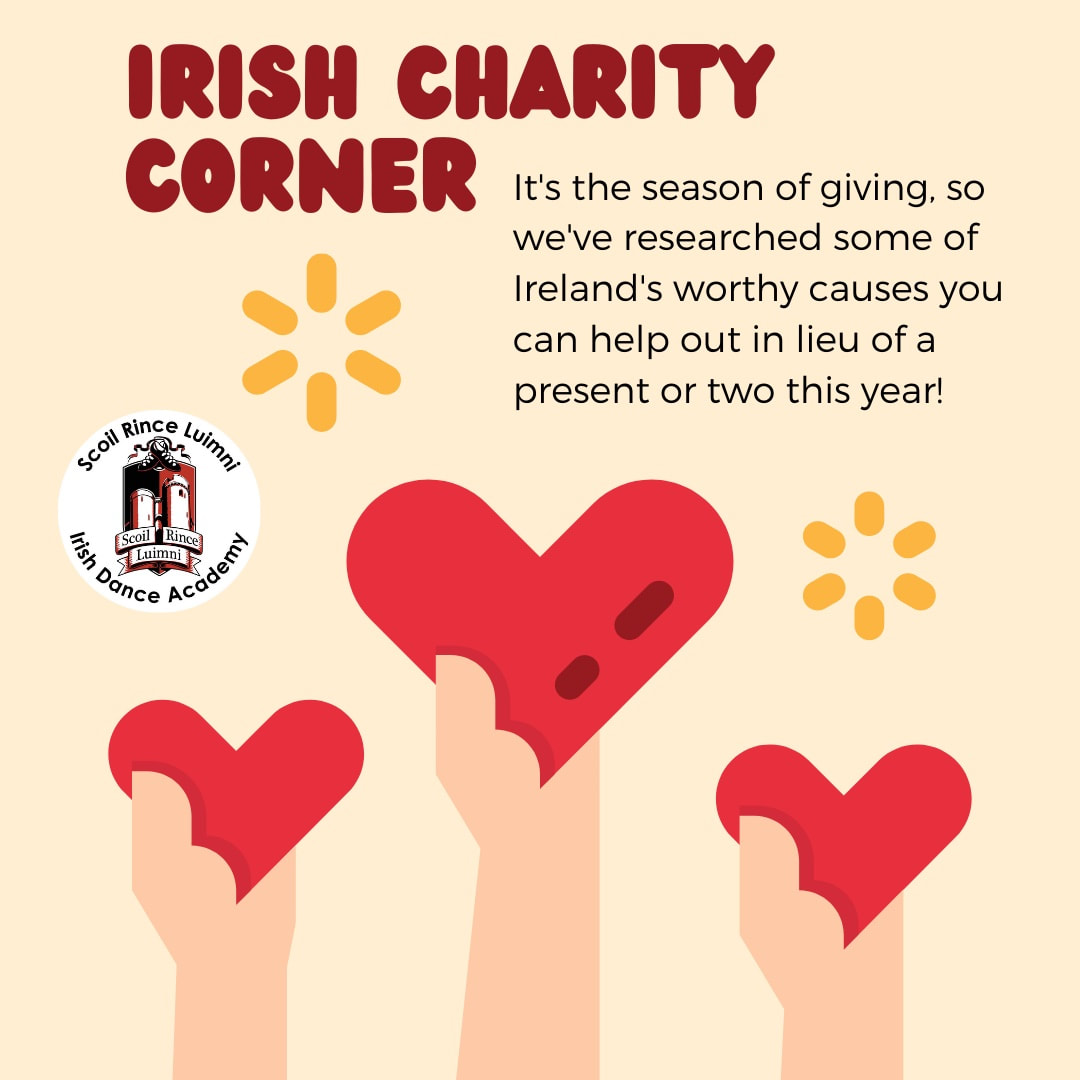
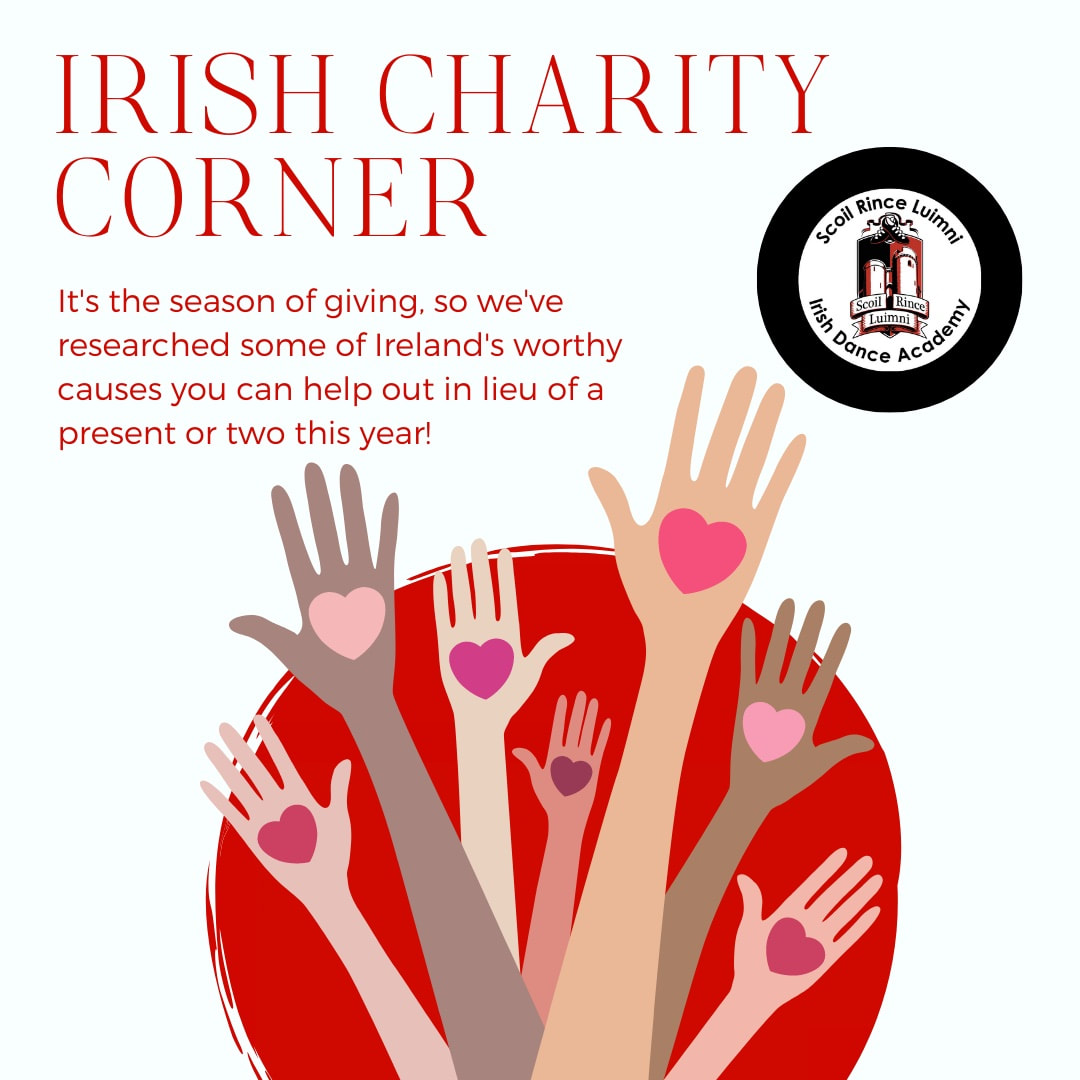
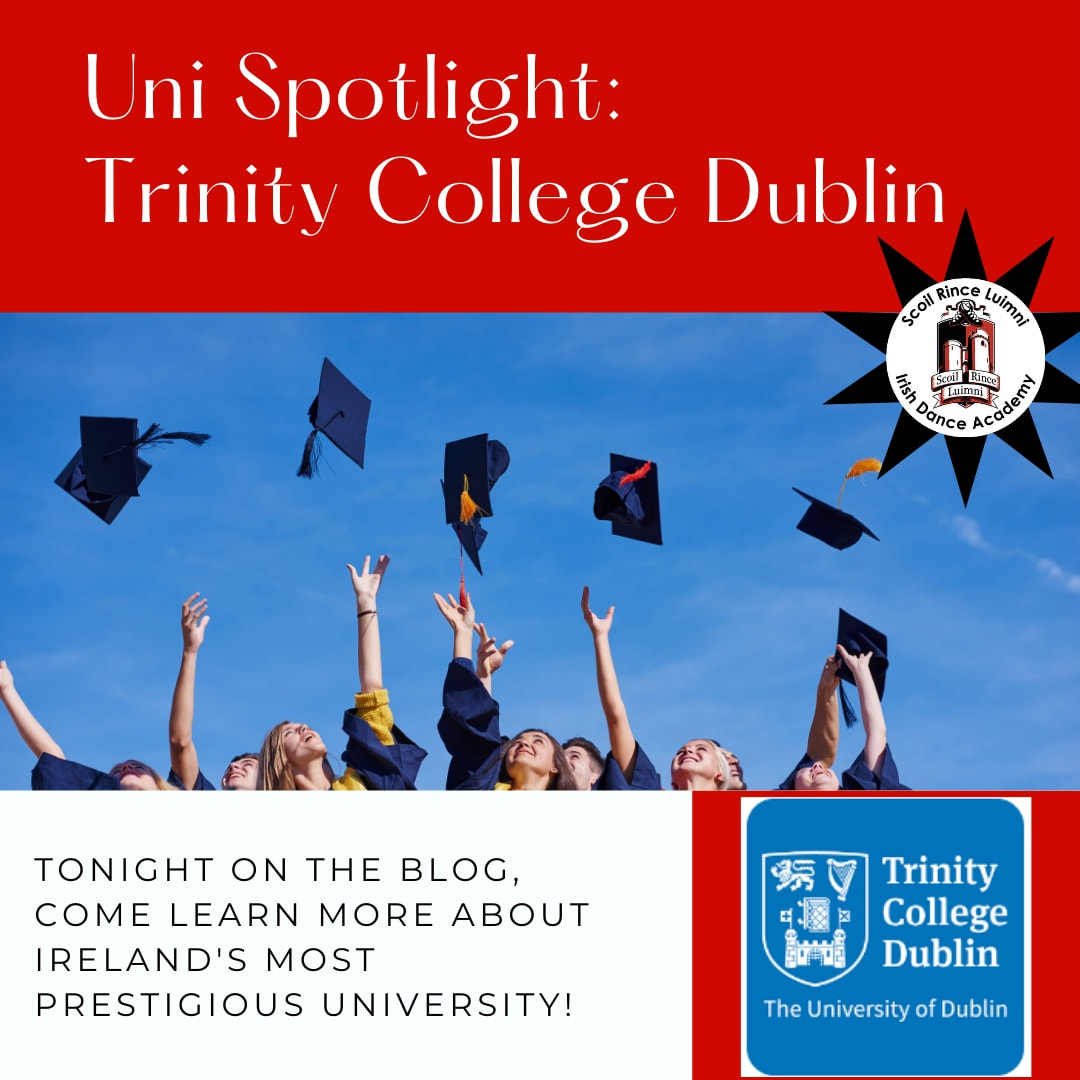
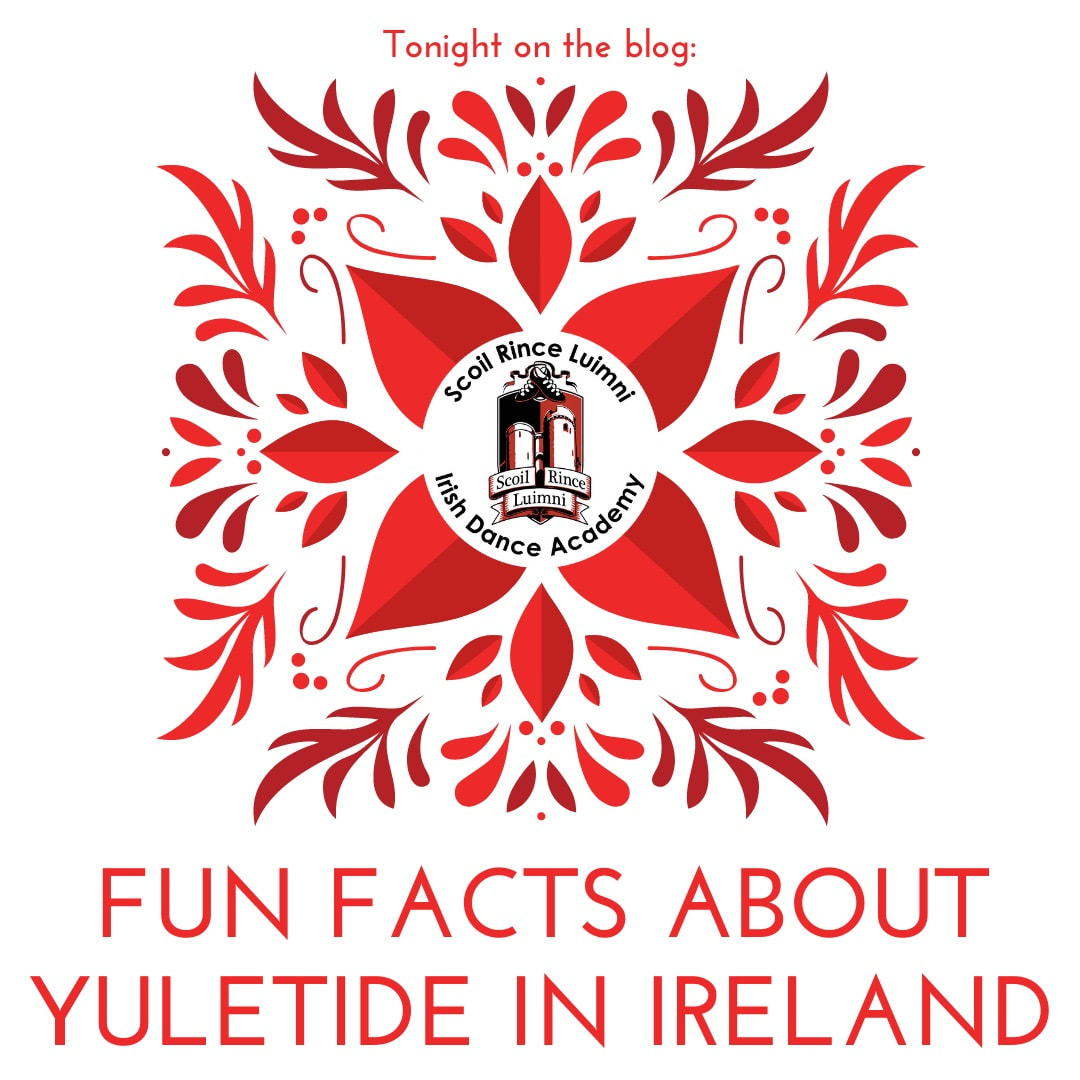
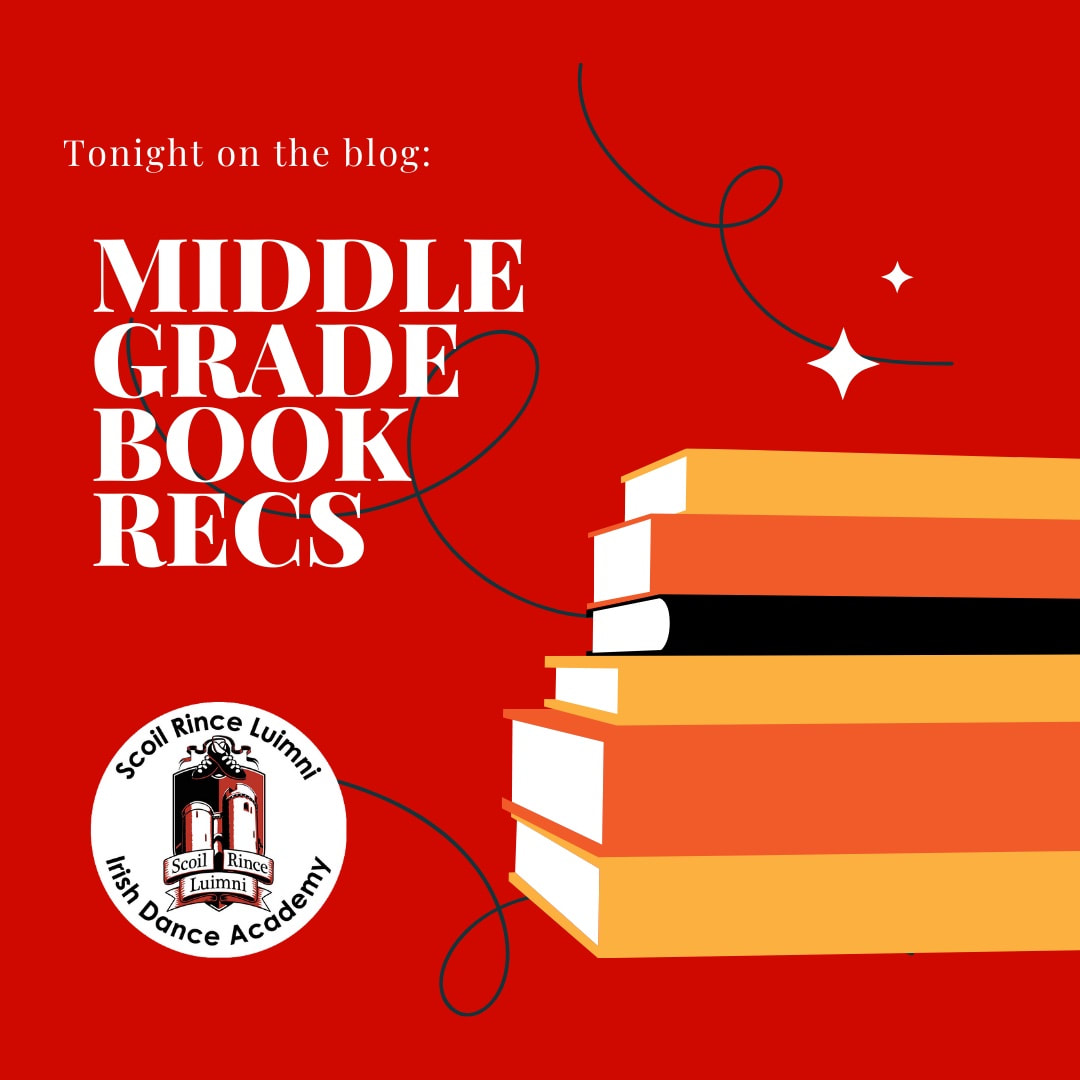

 RSS Feed
RSS Feed